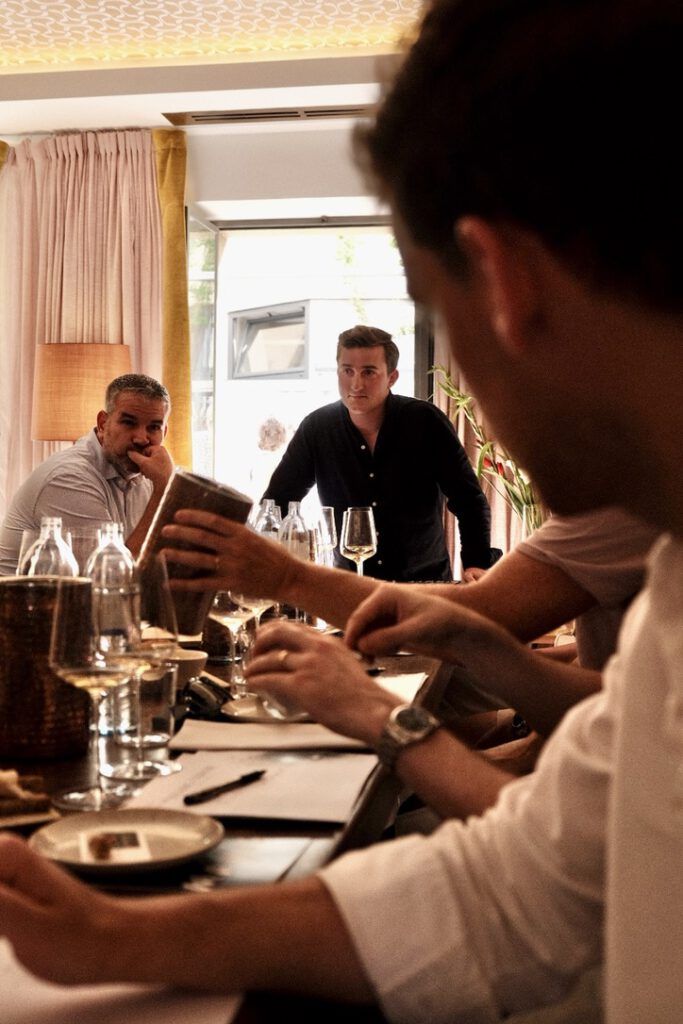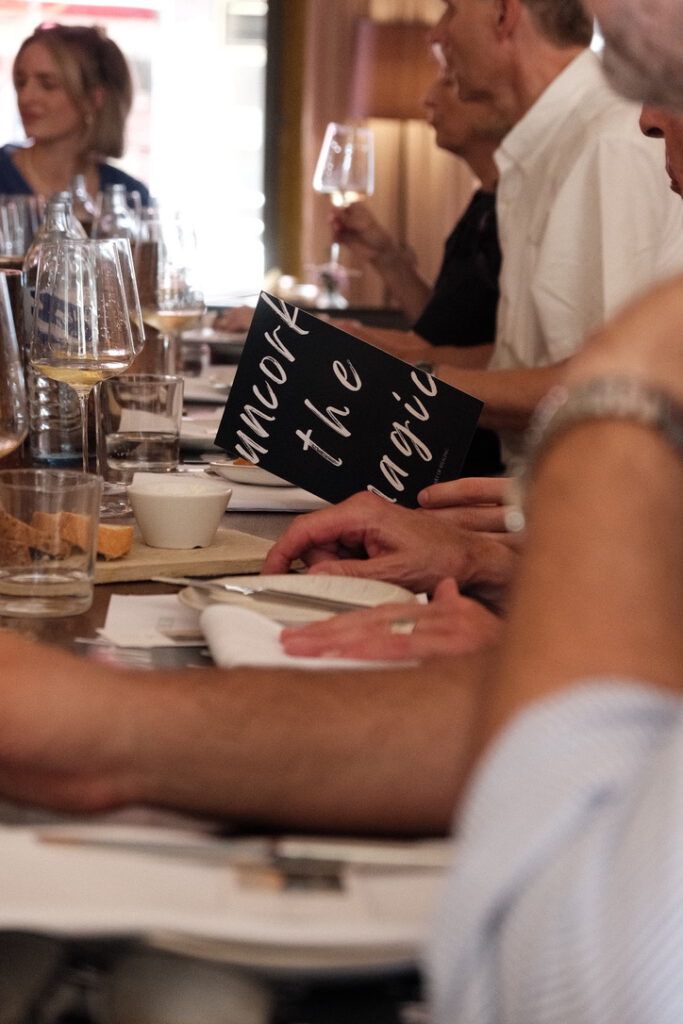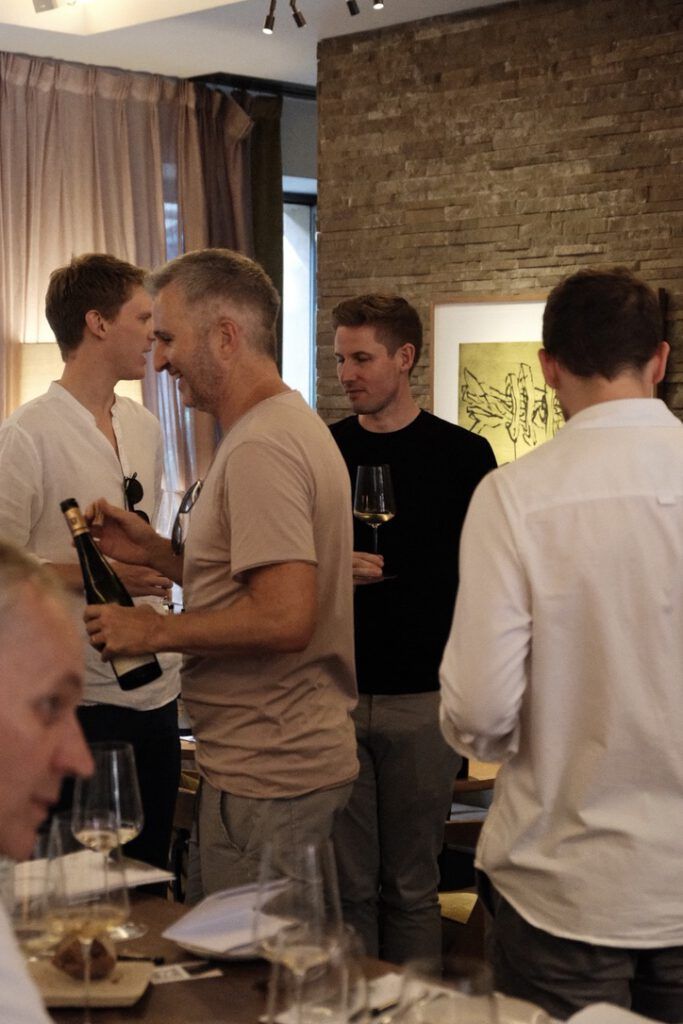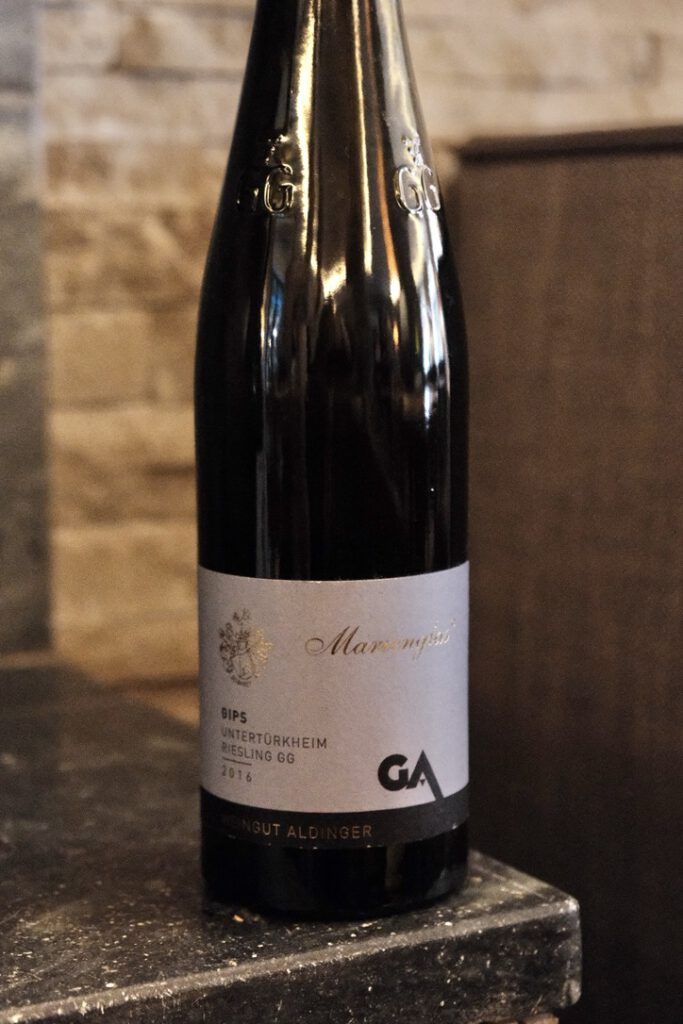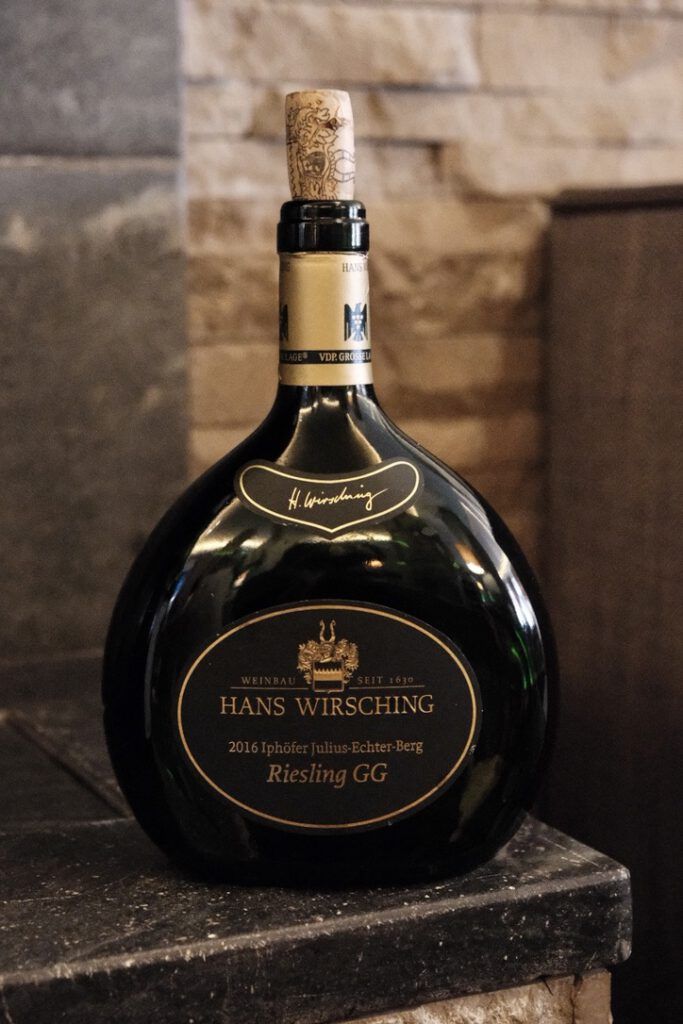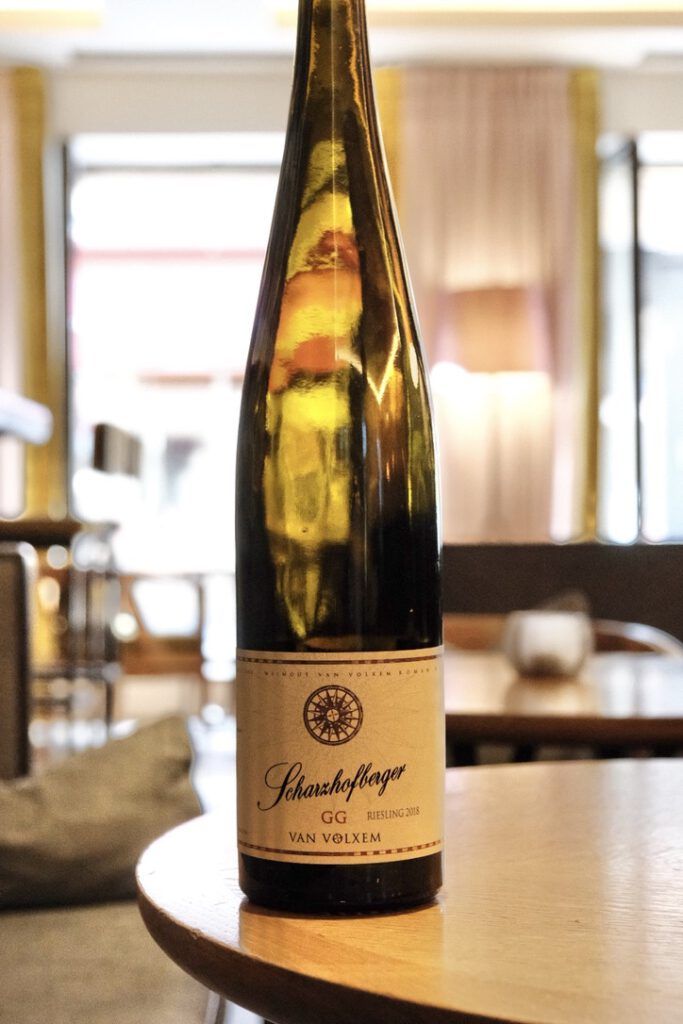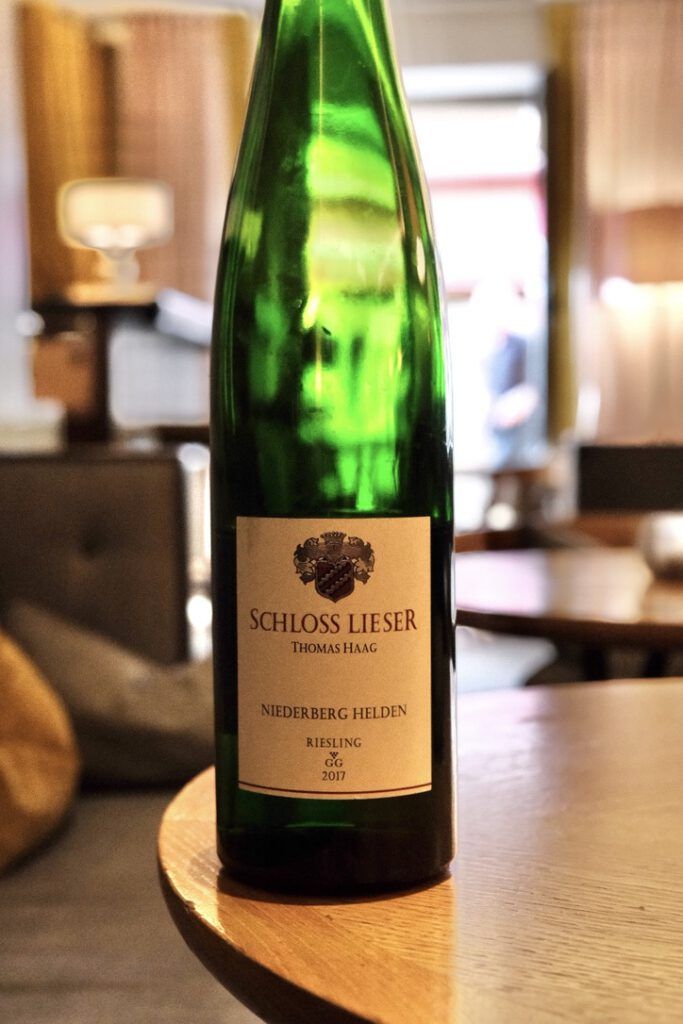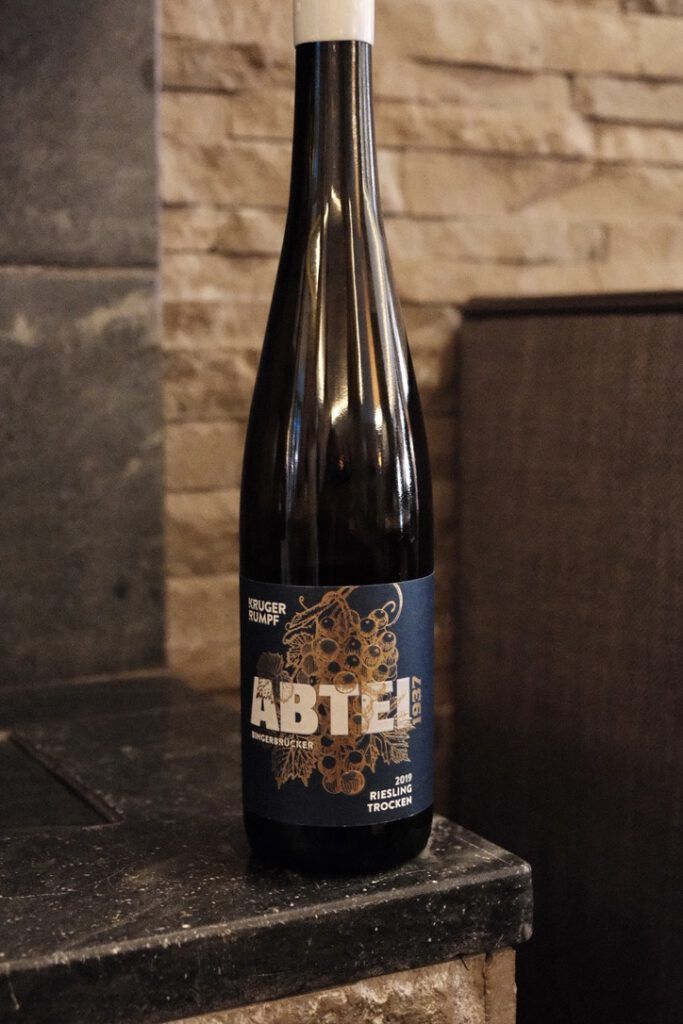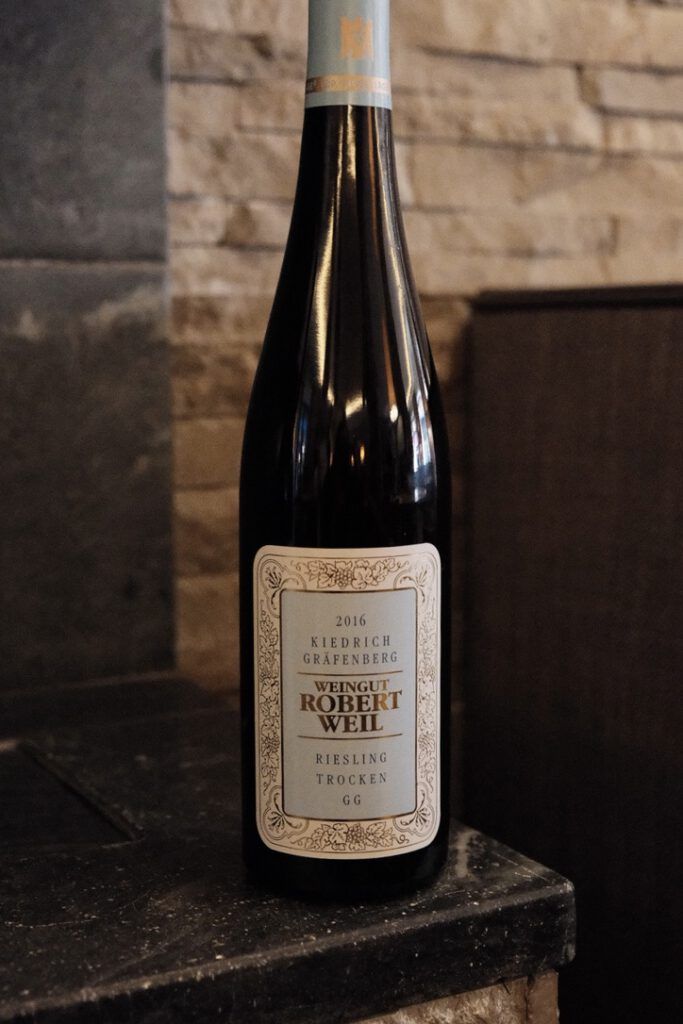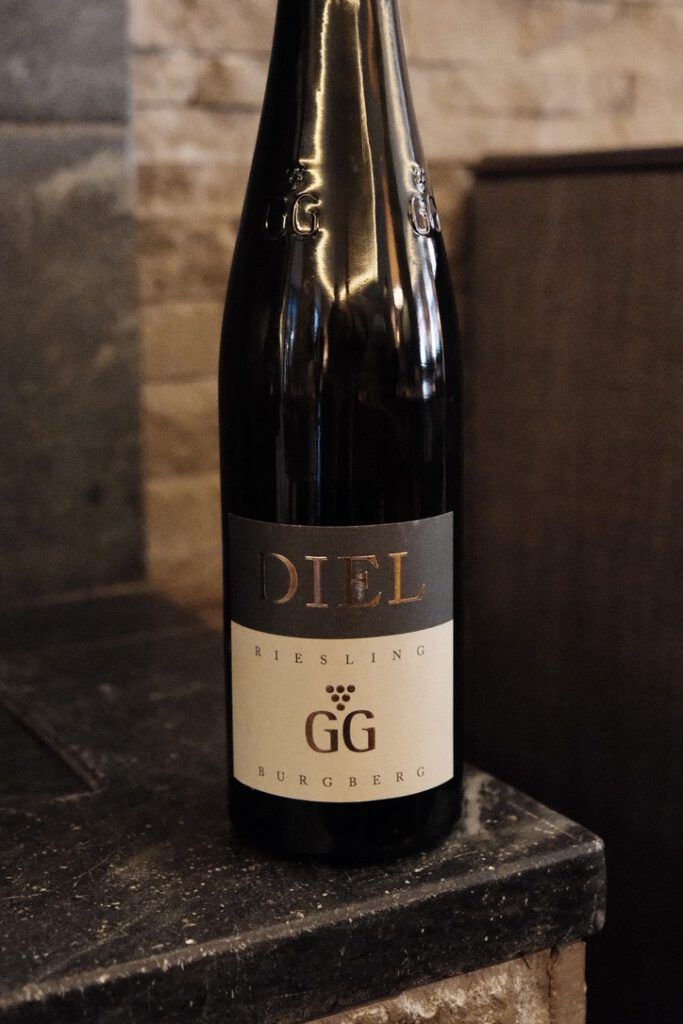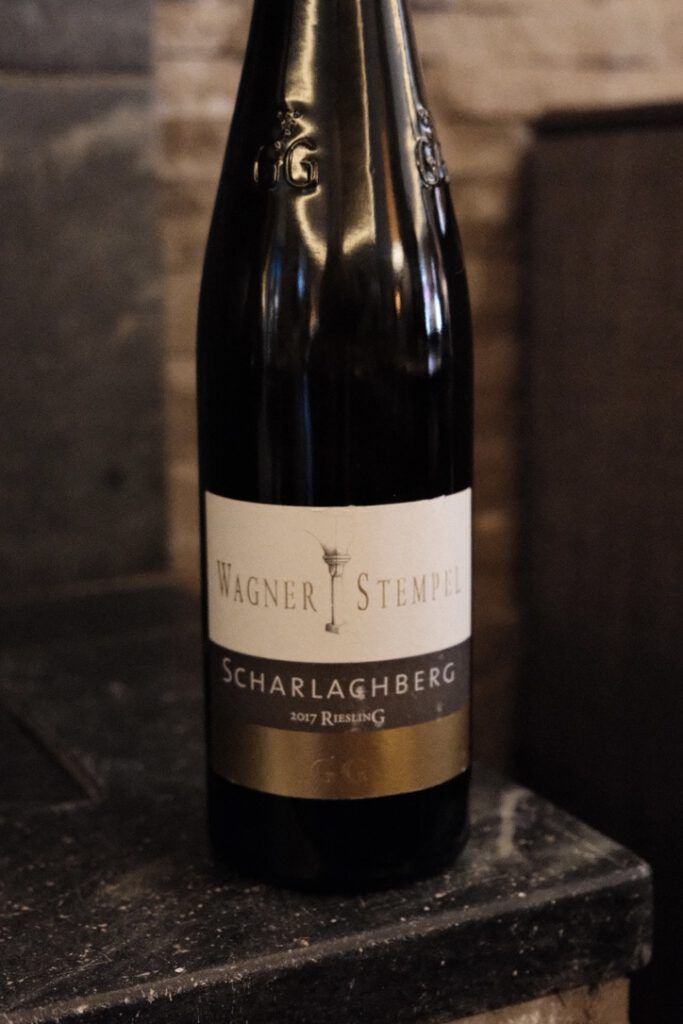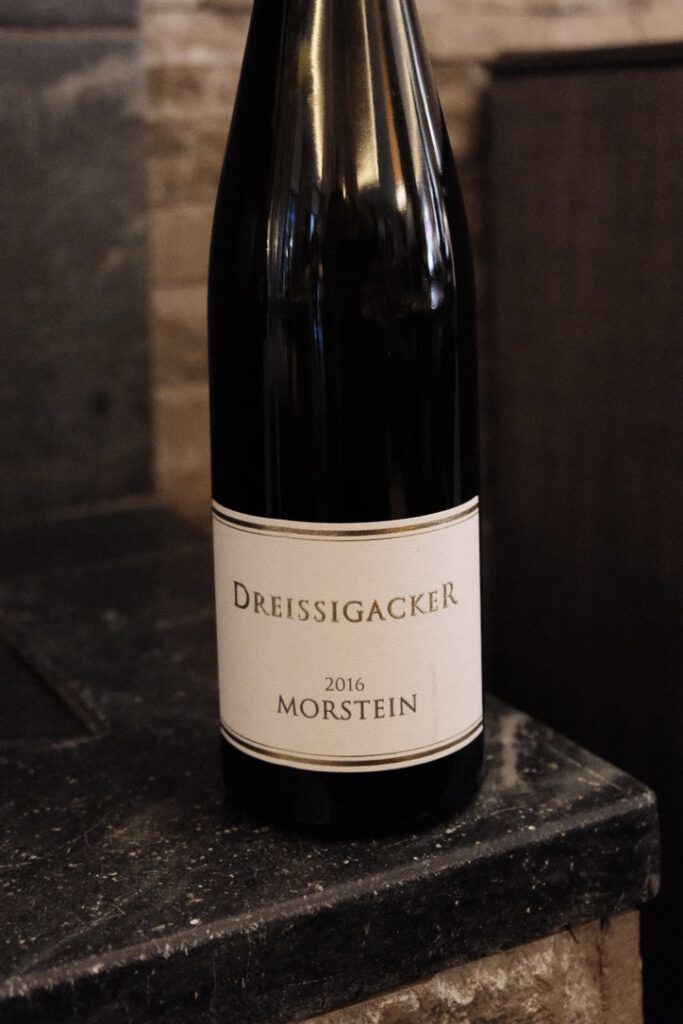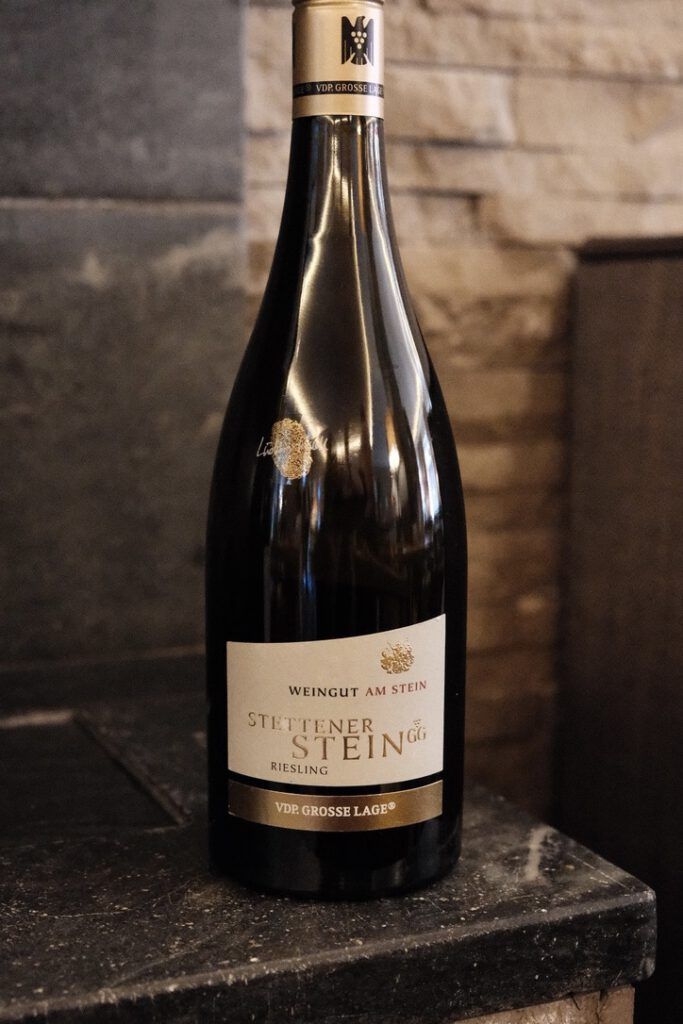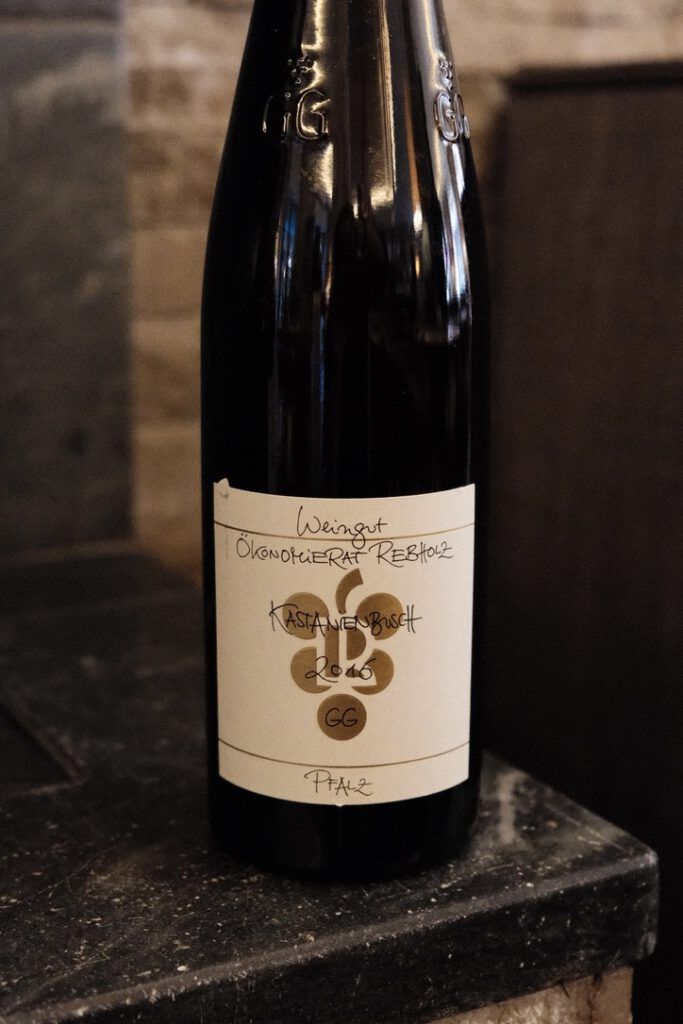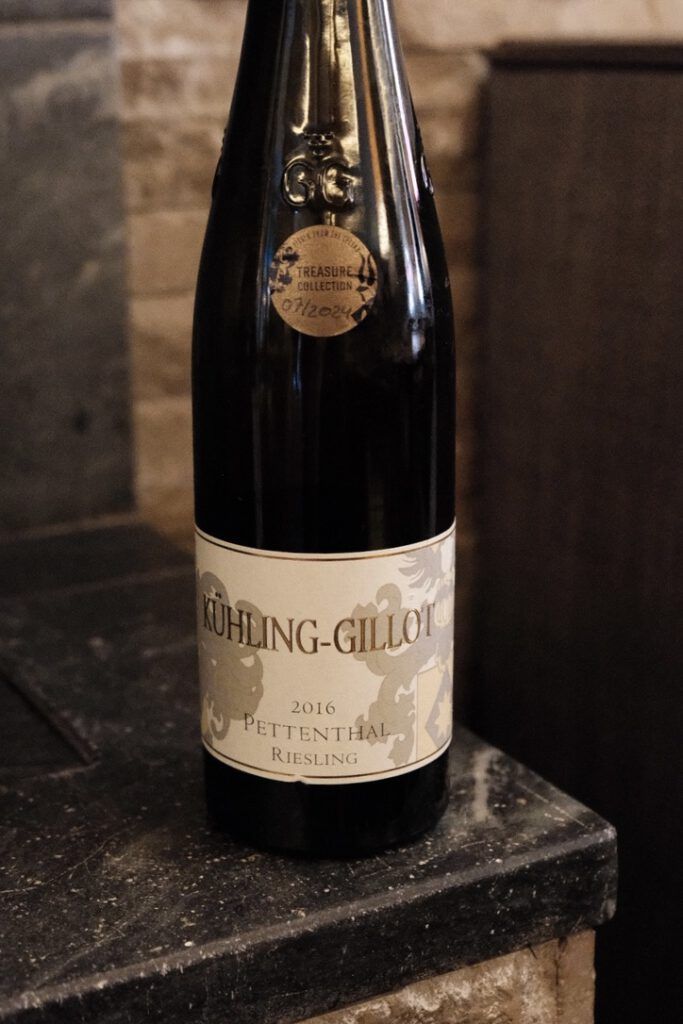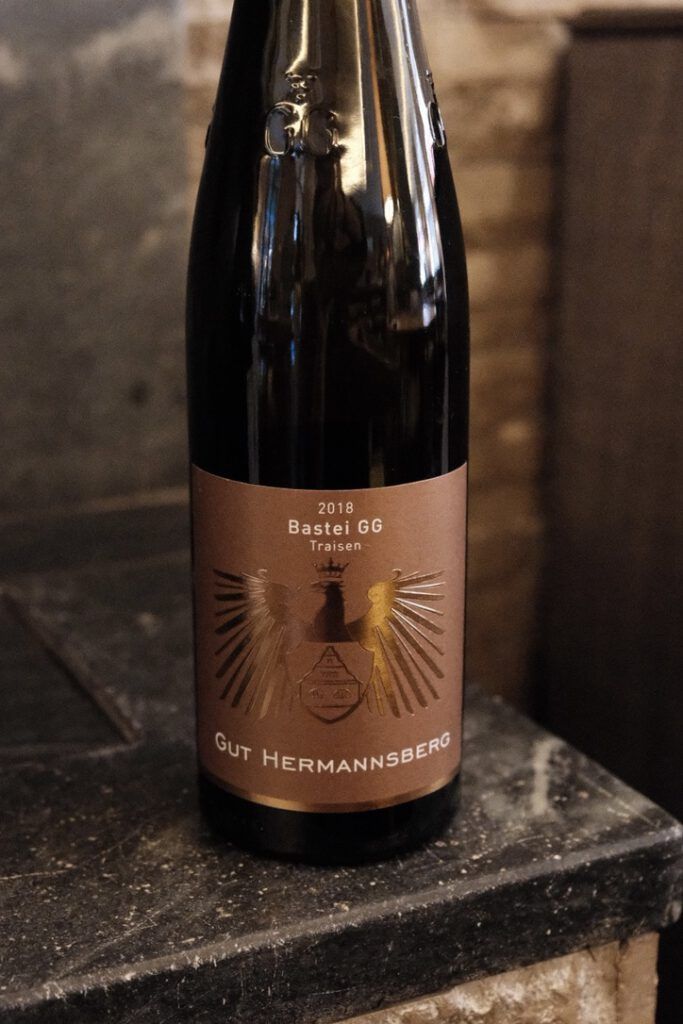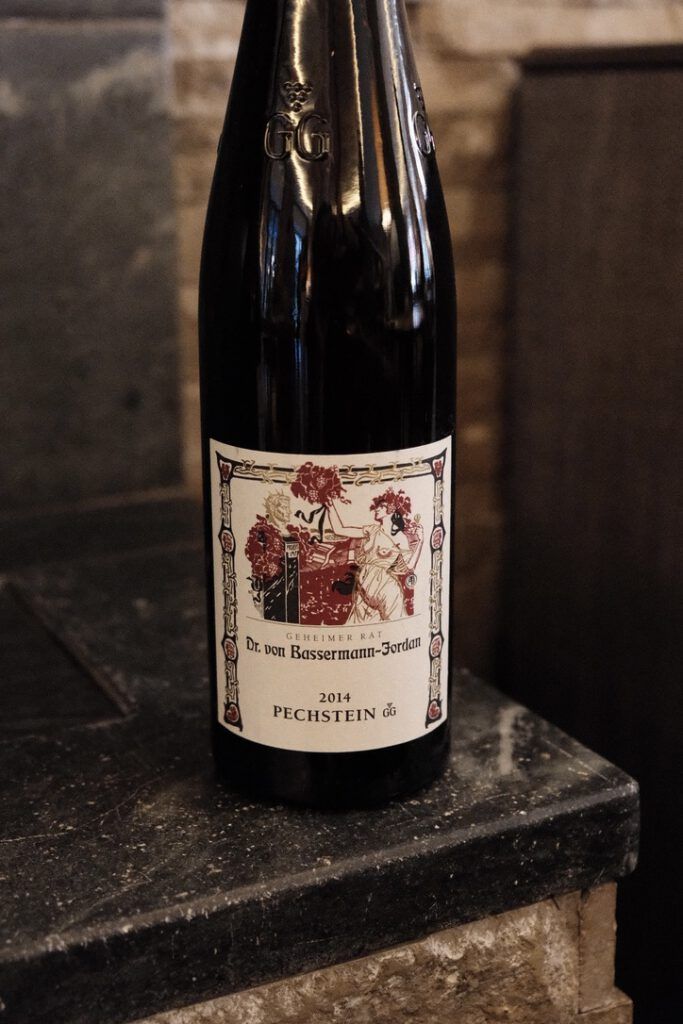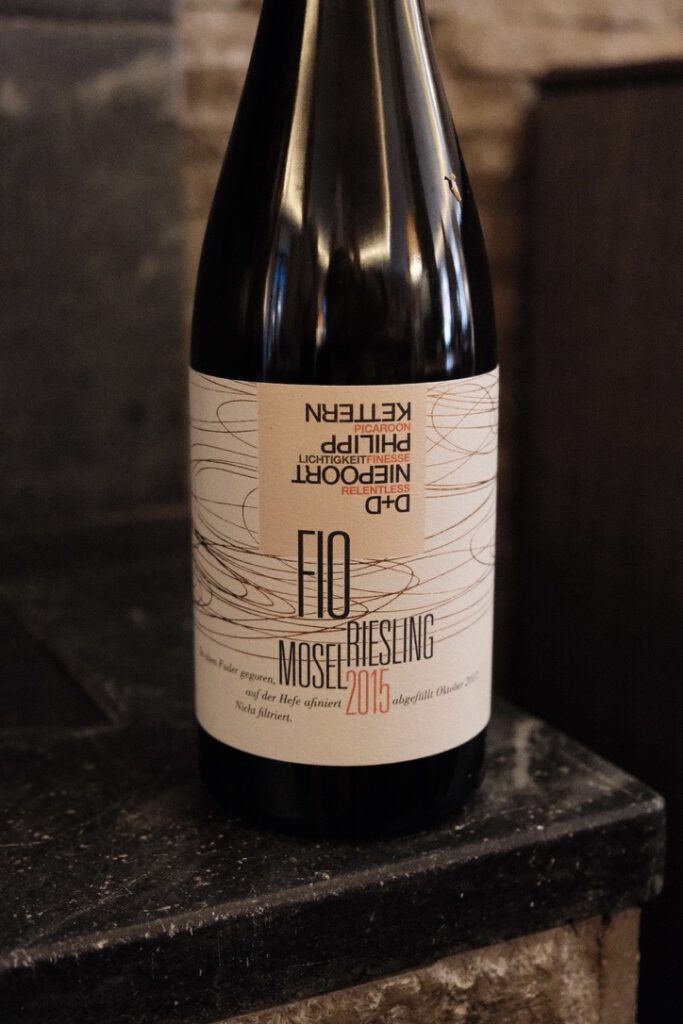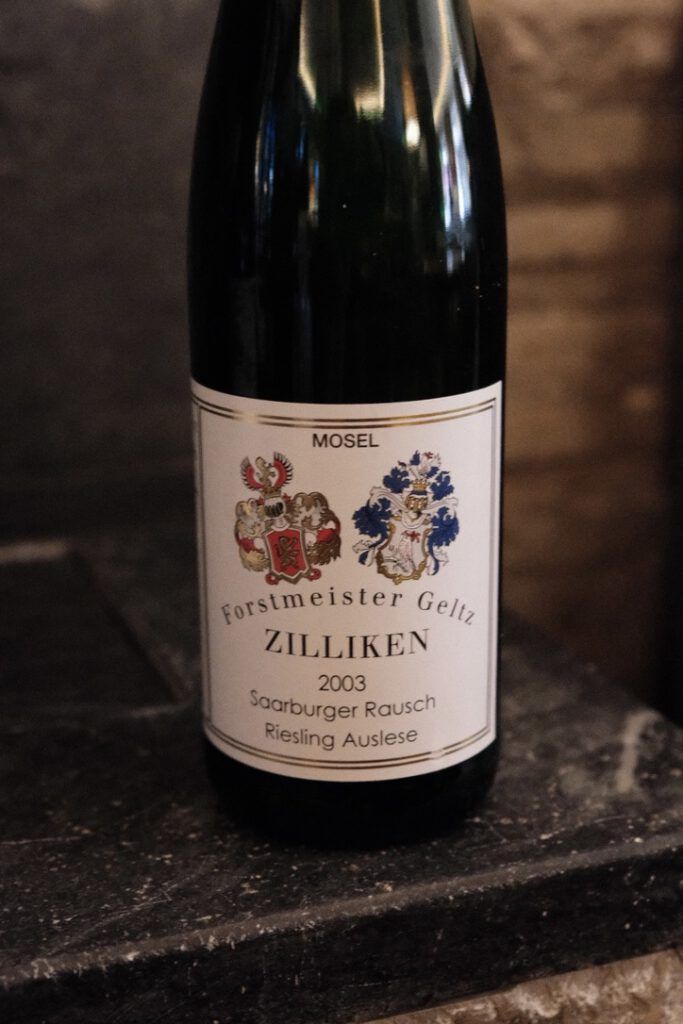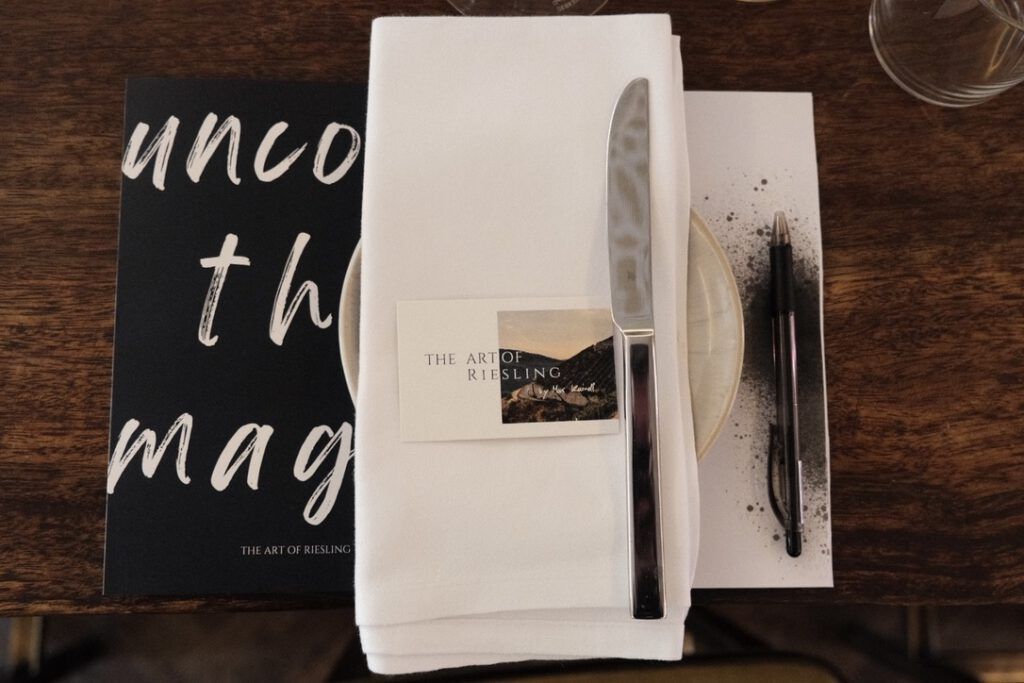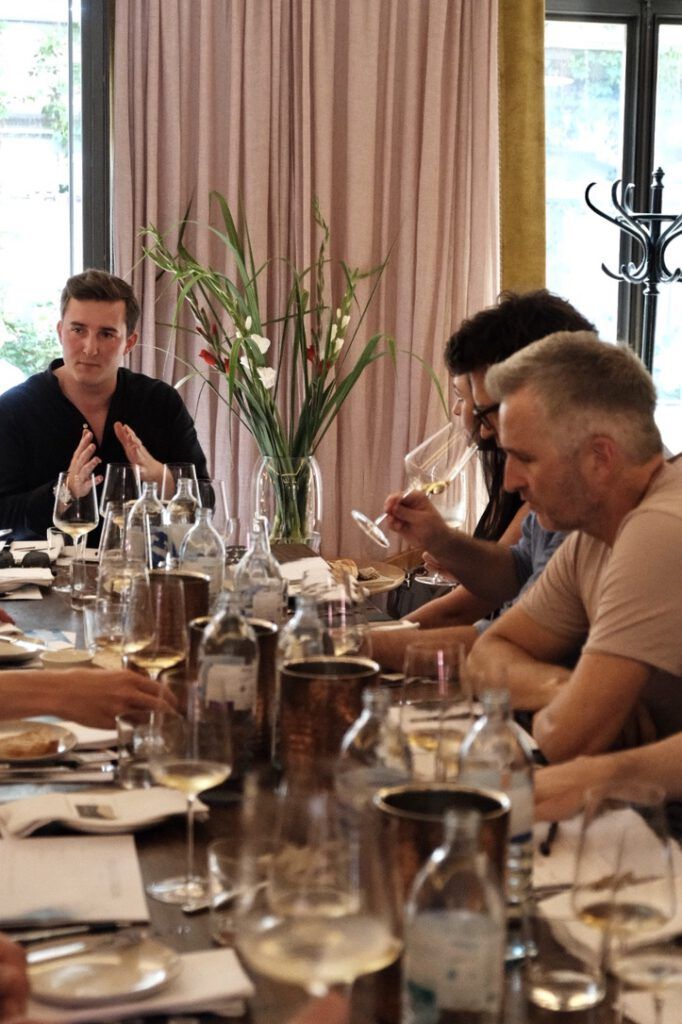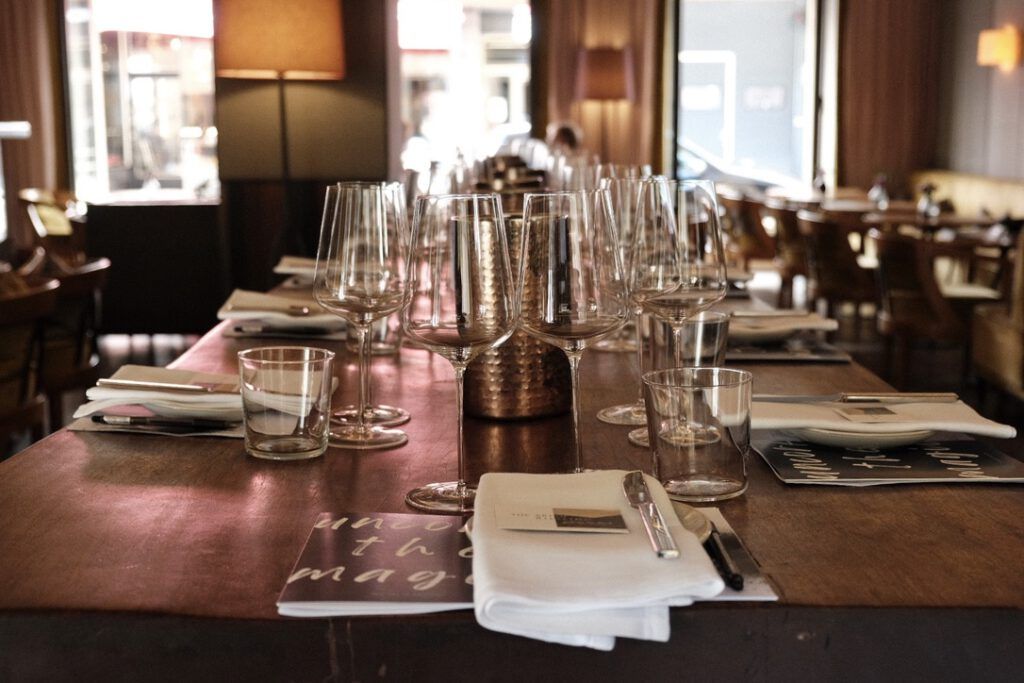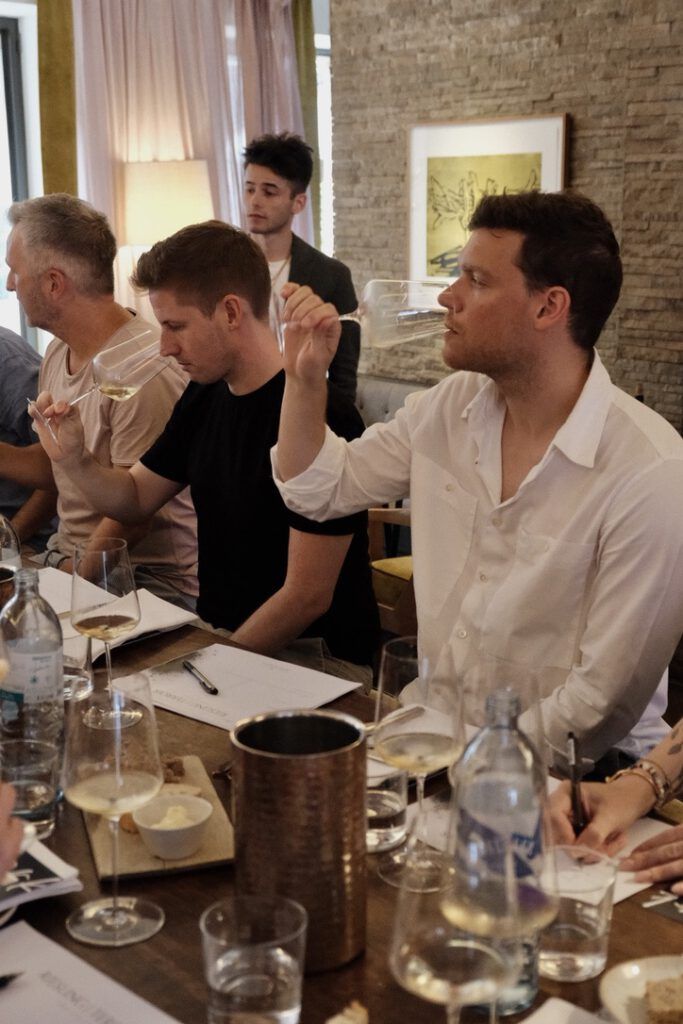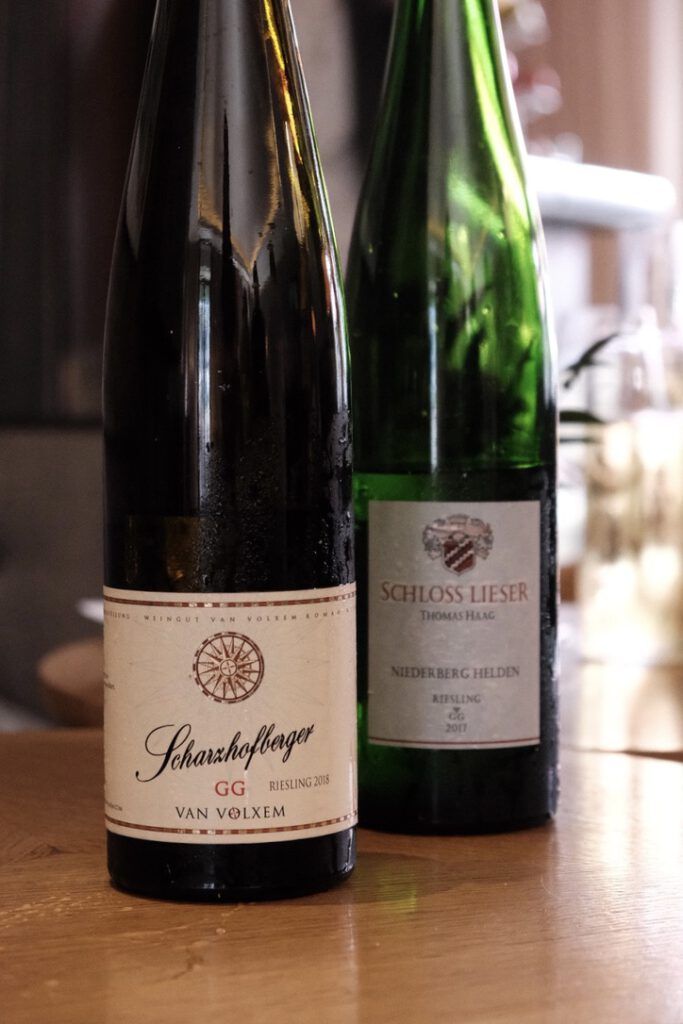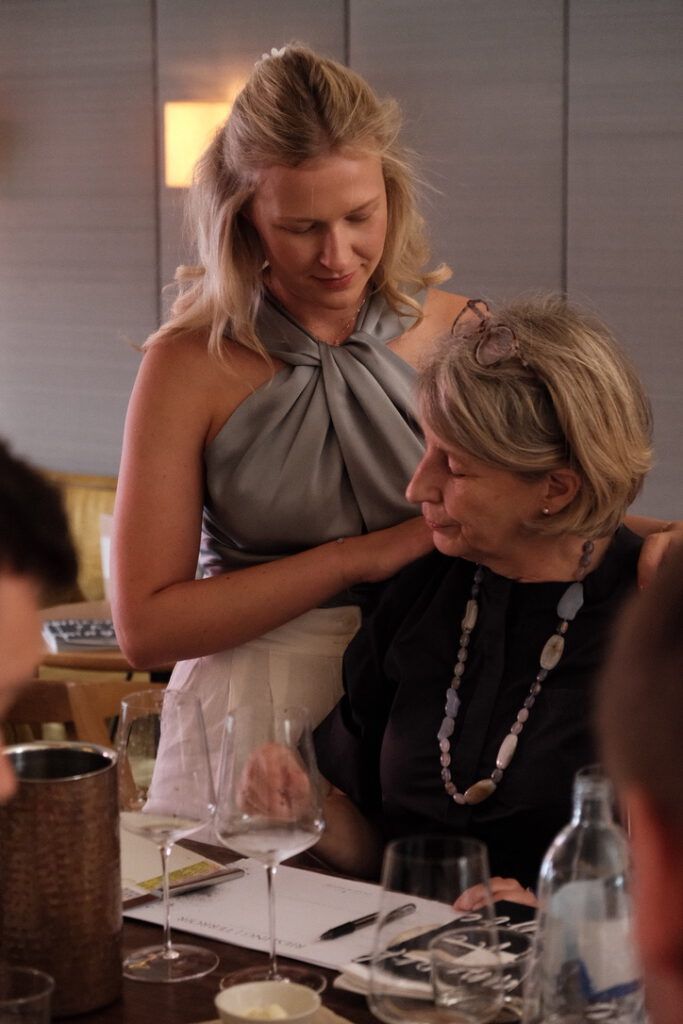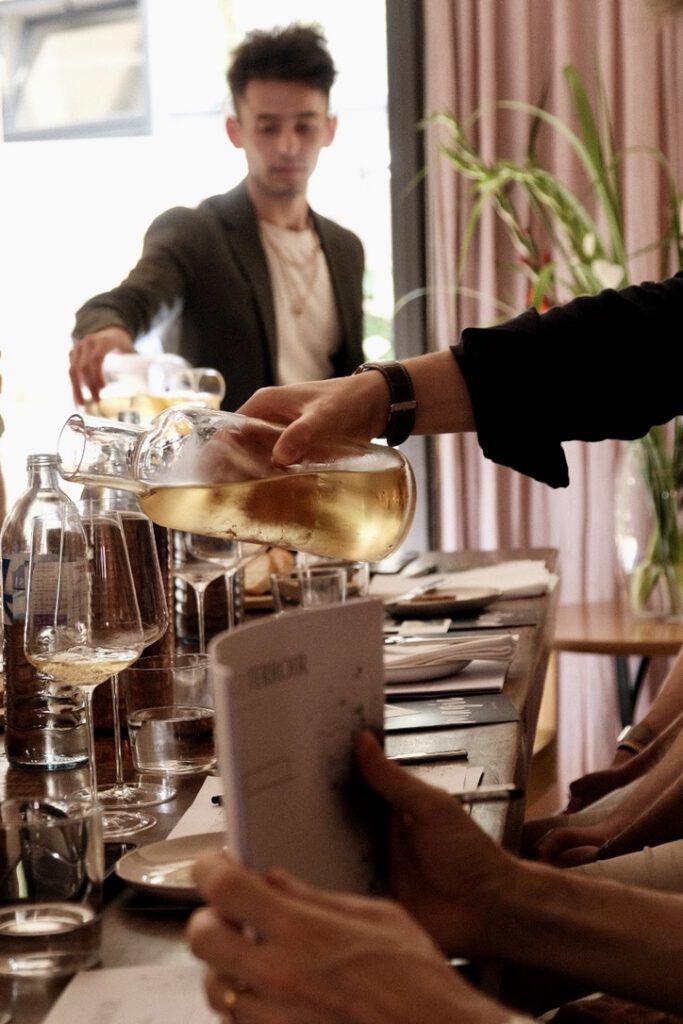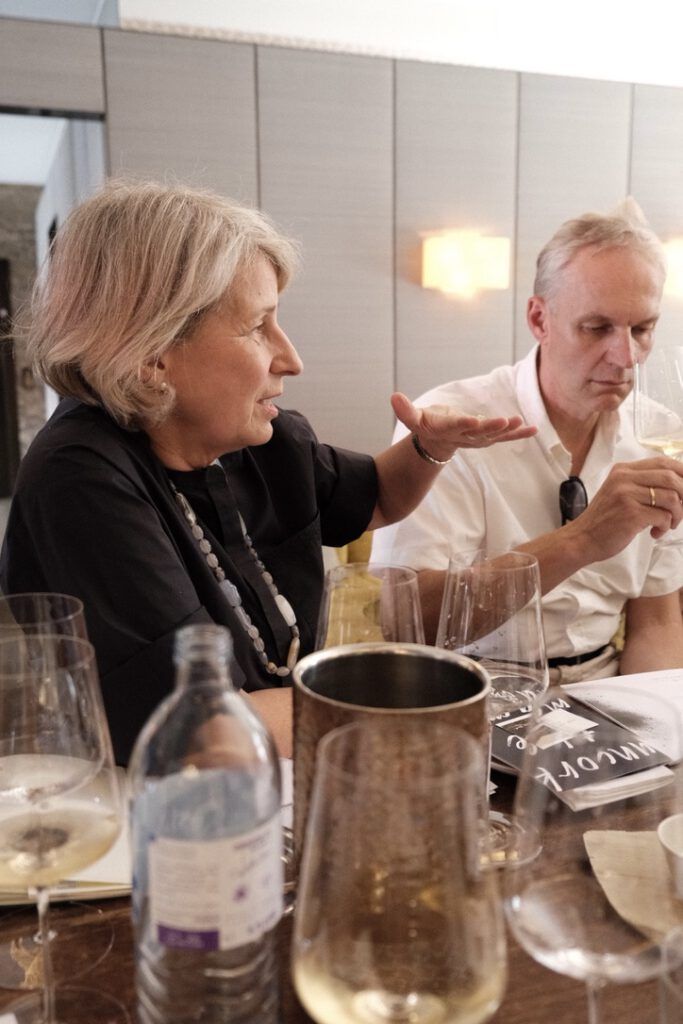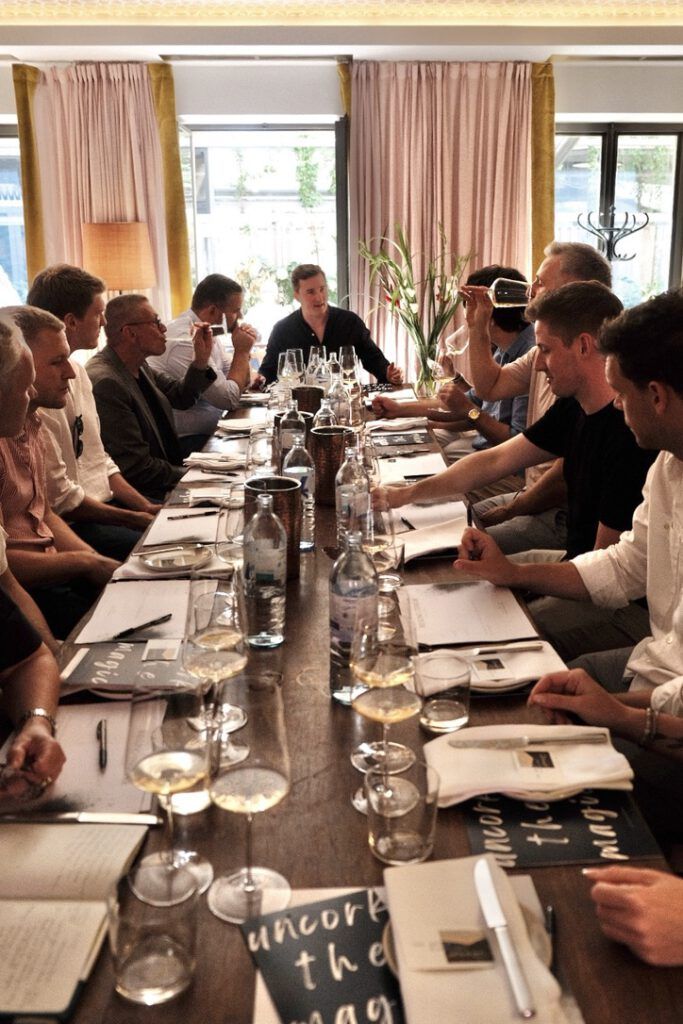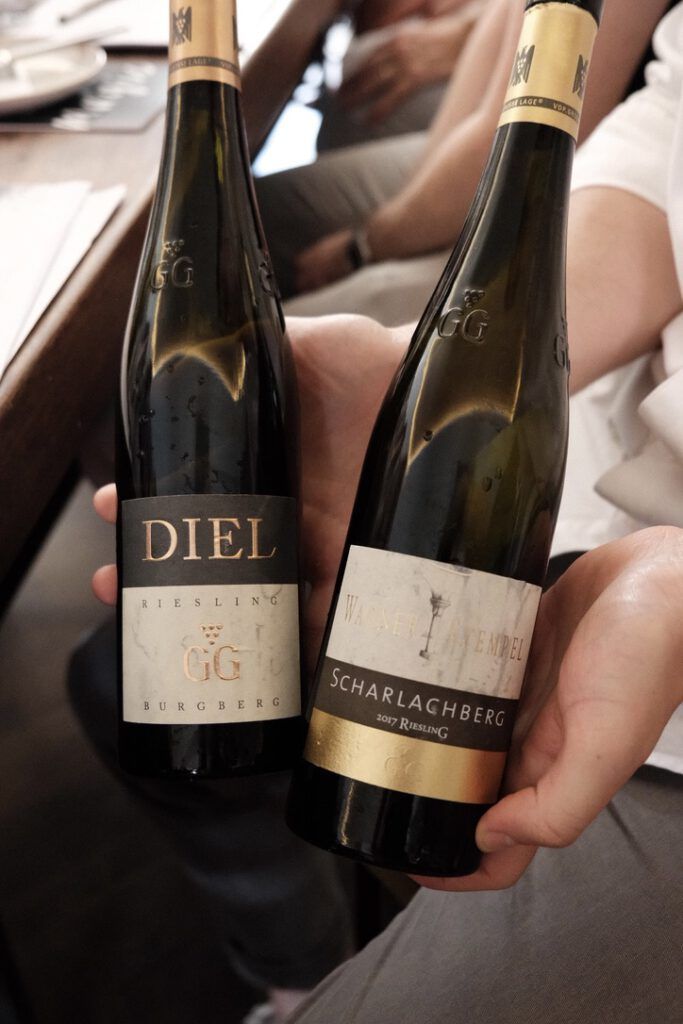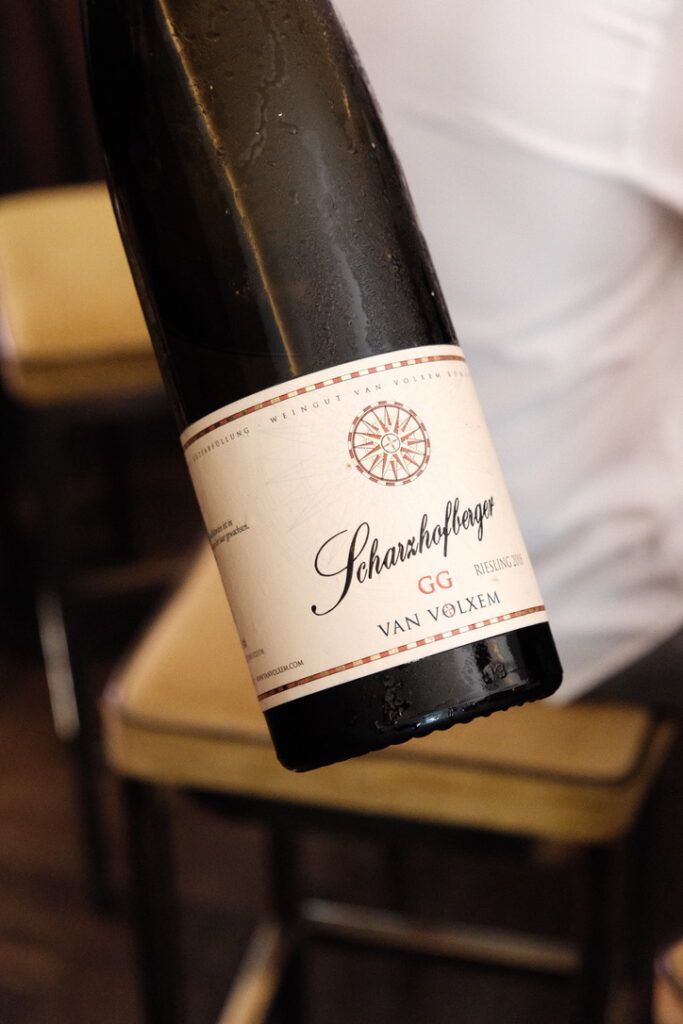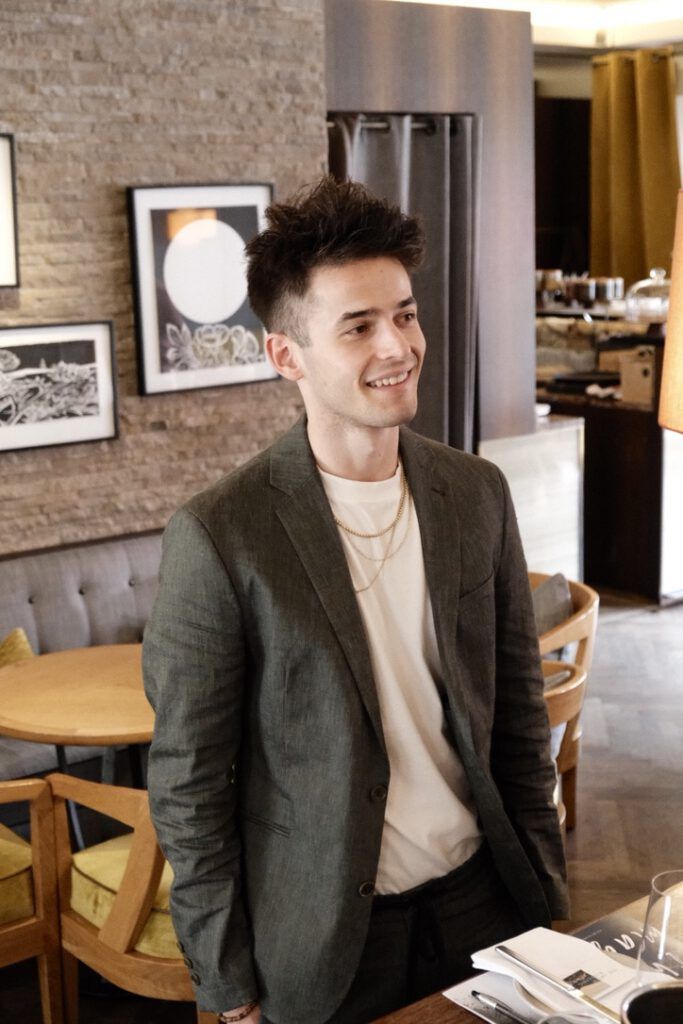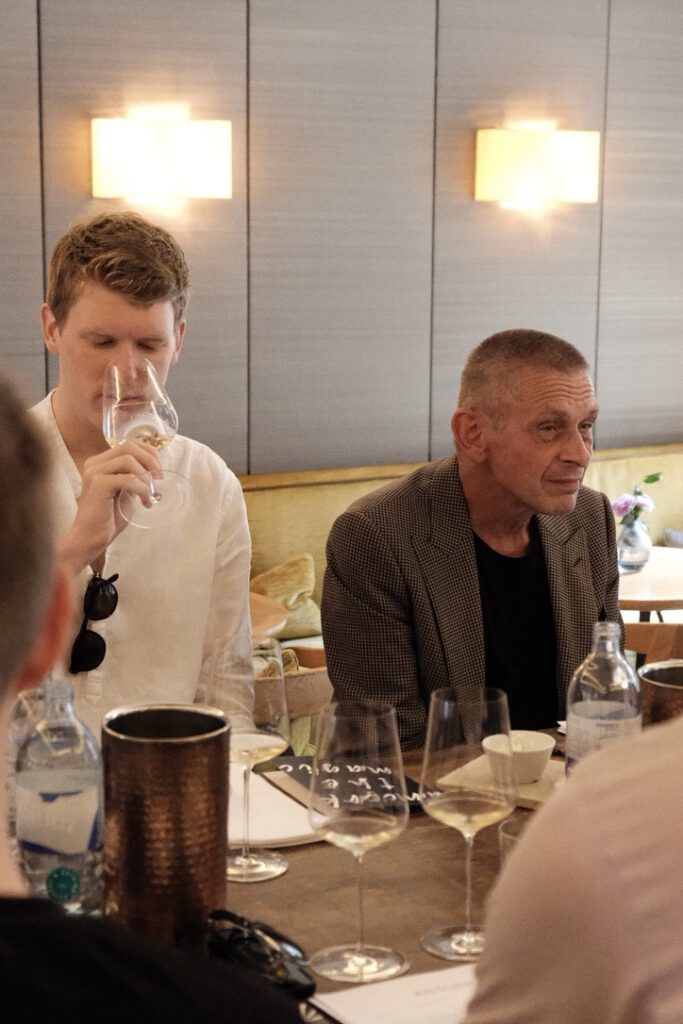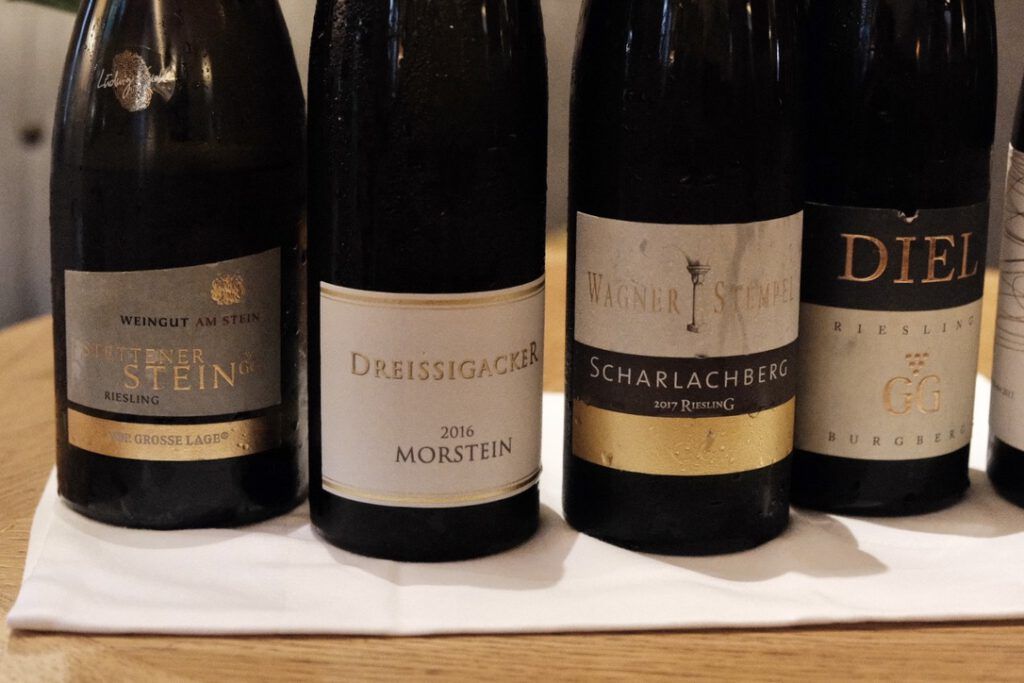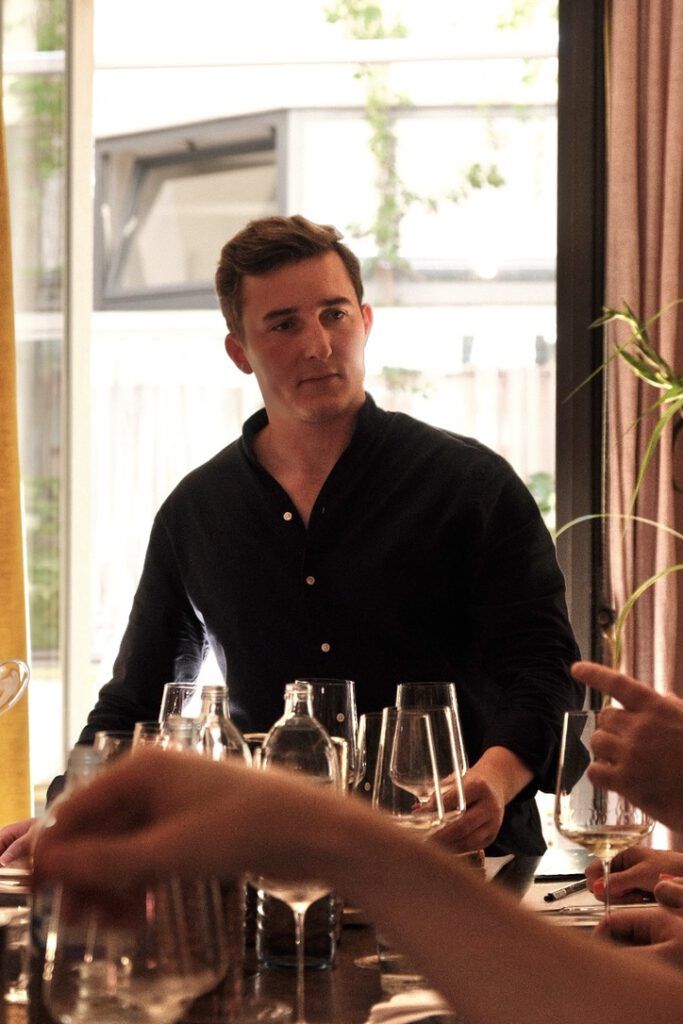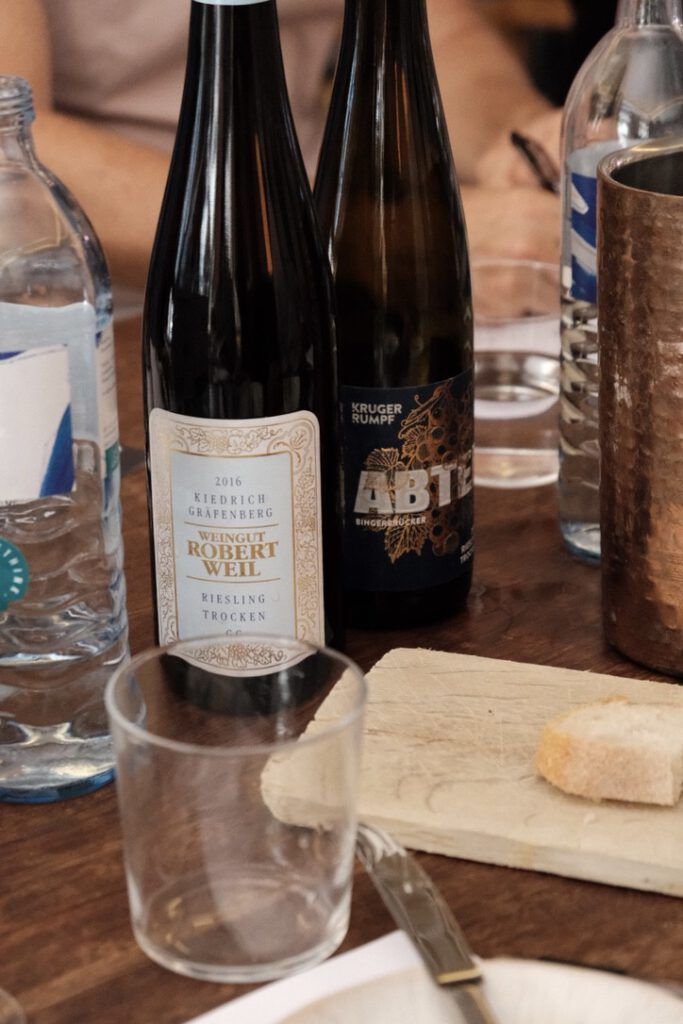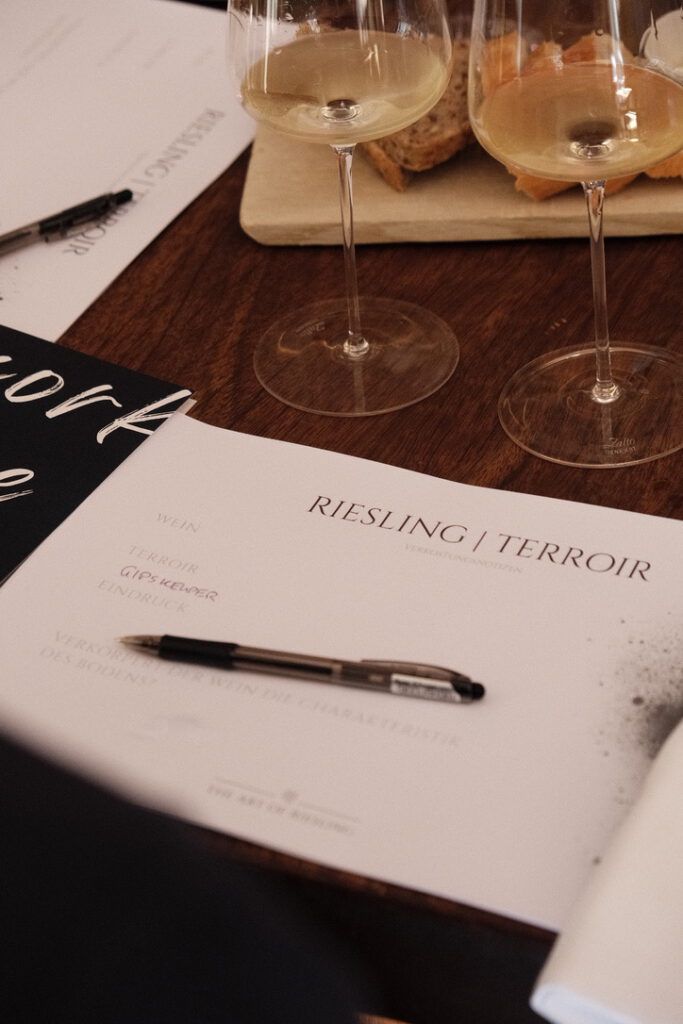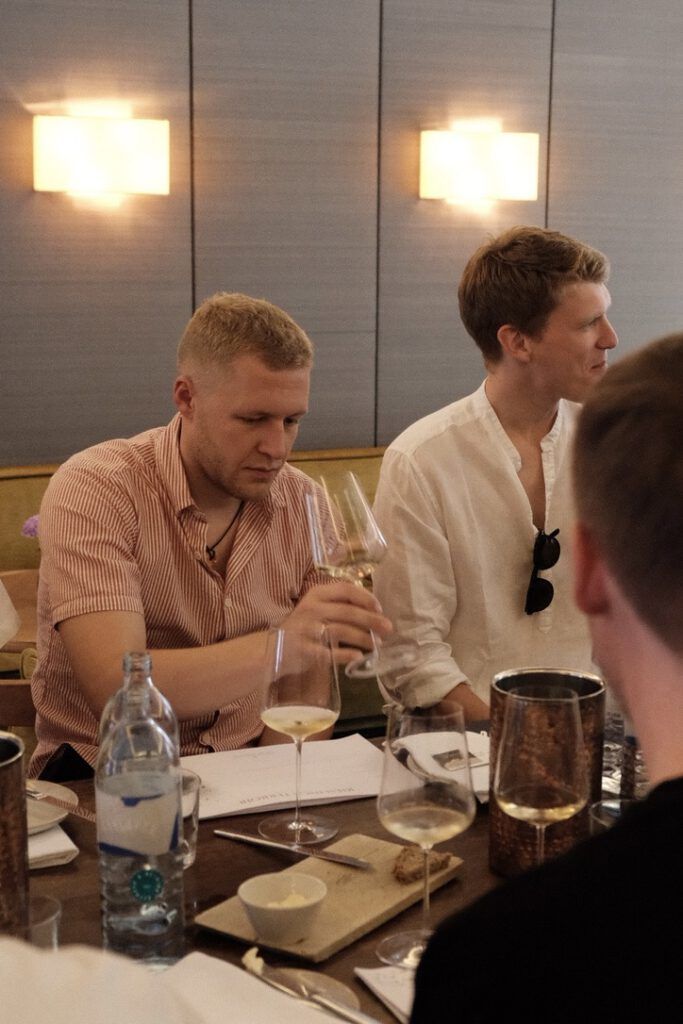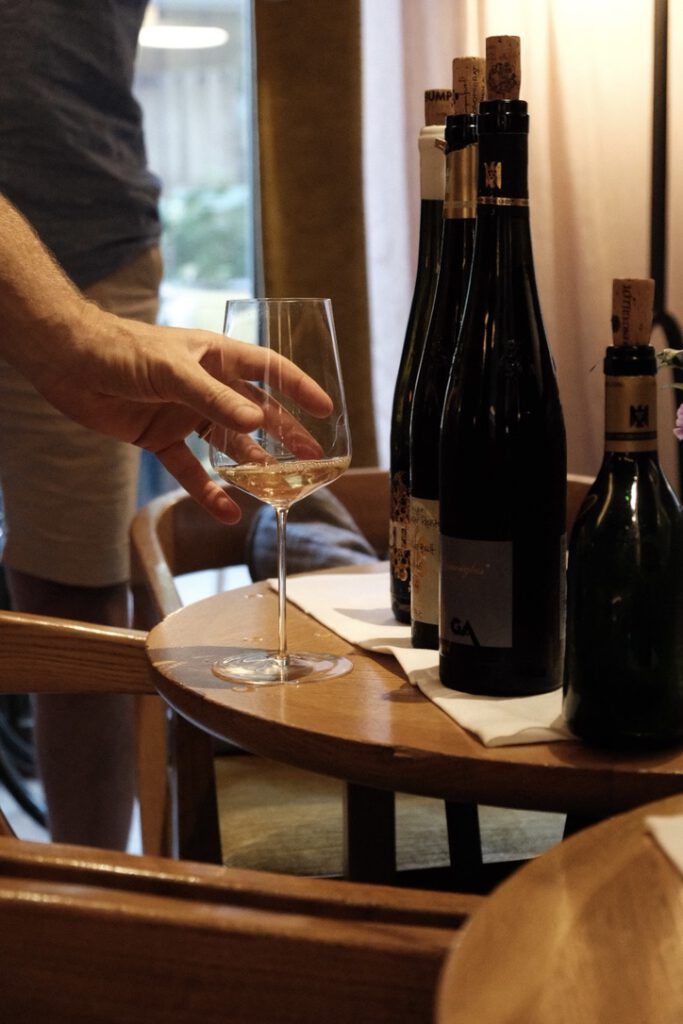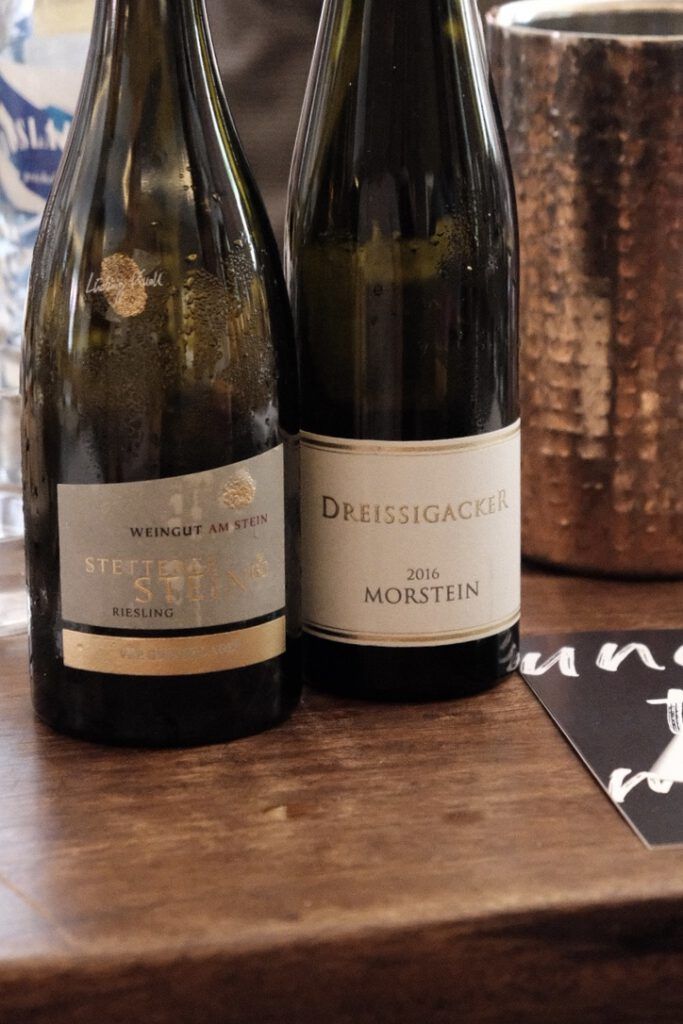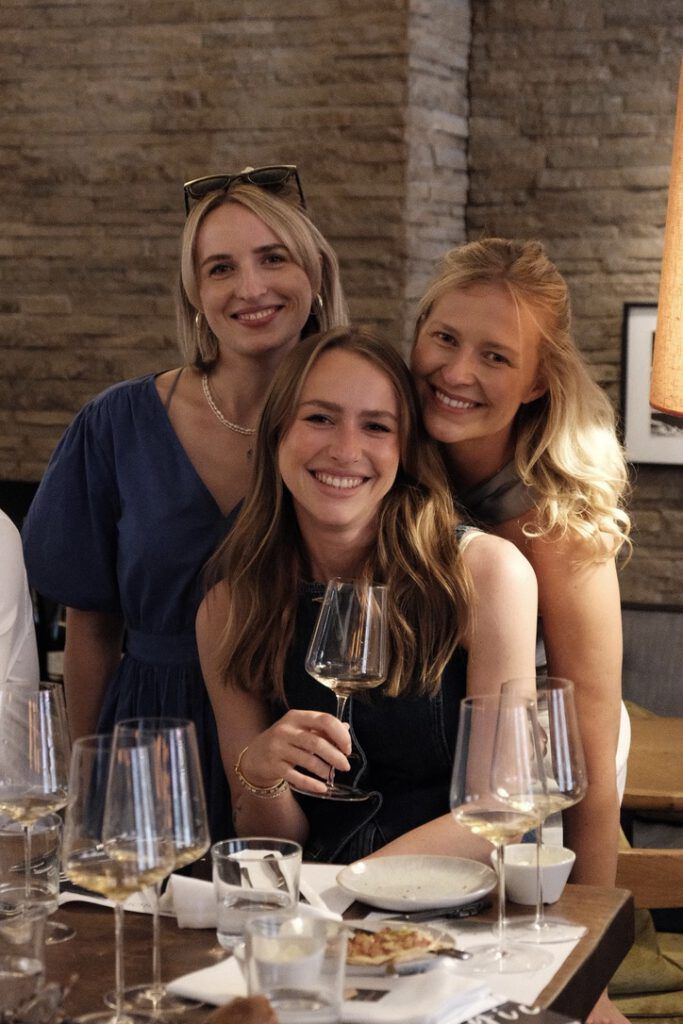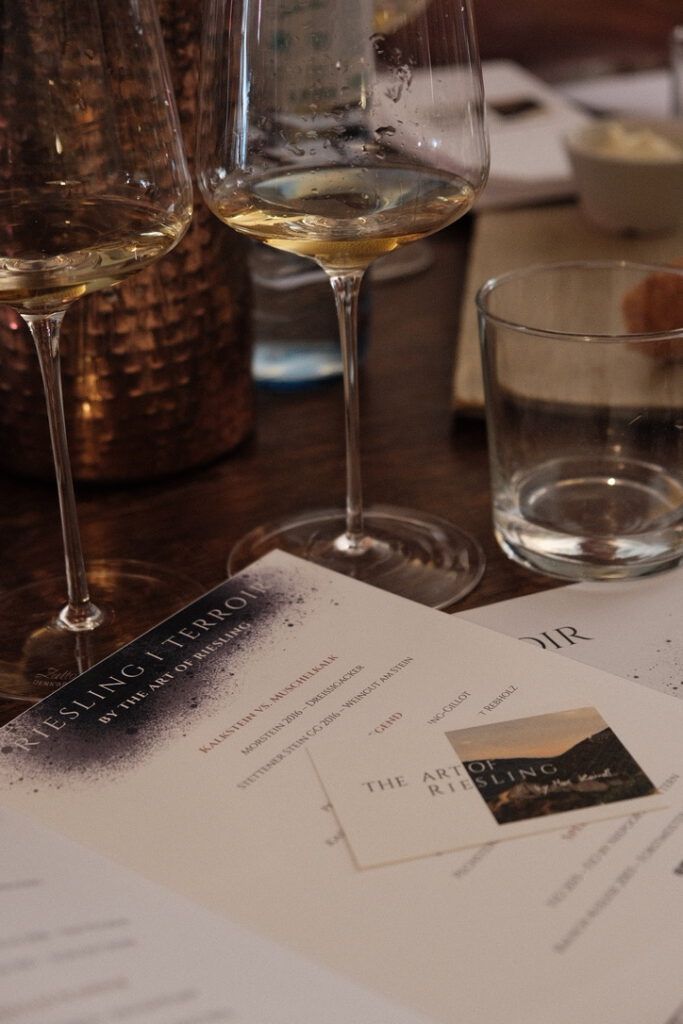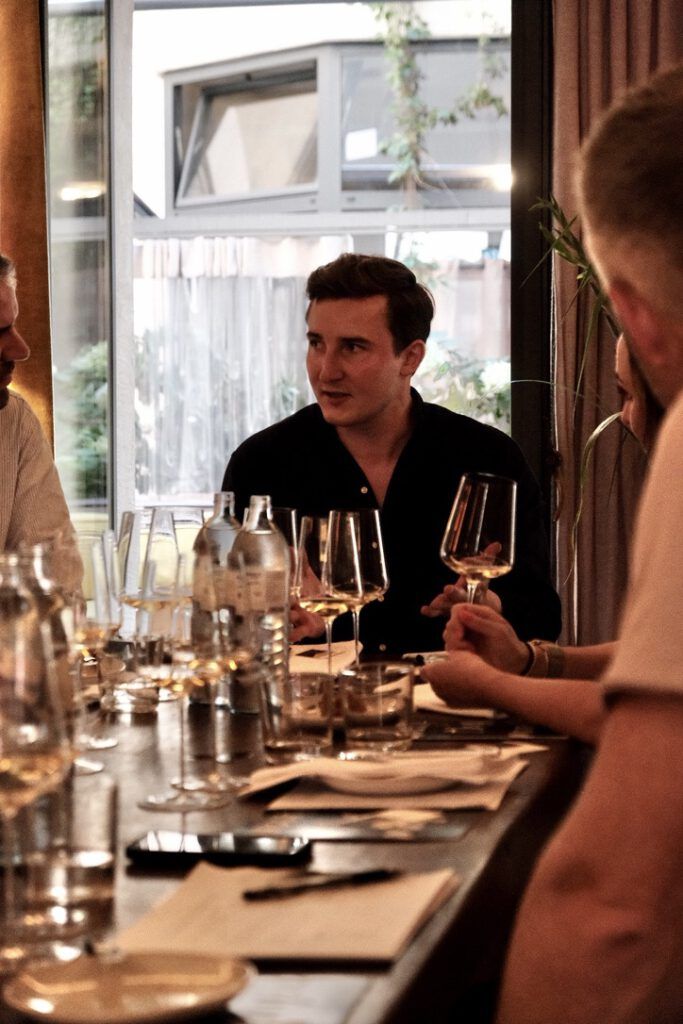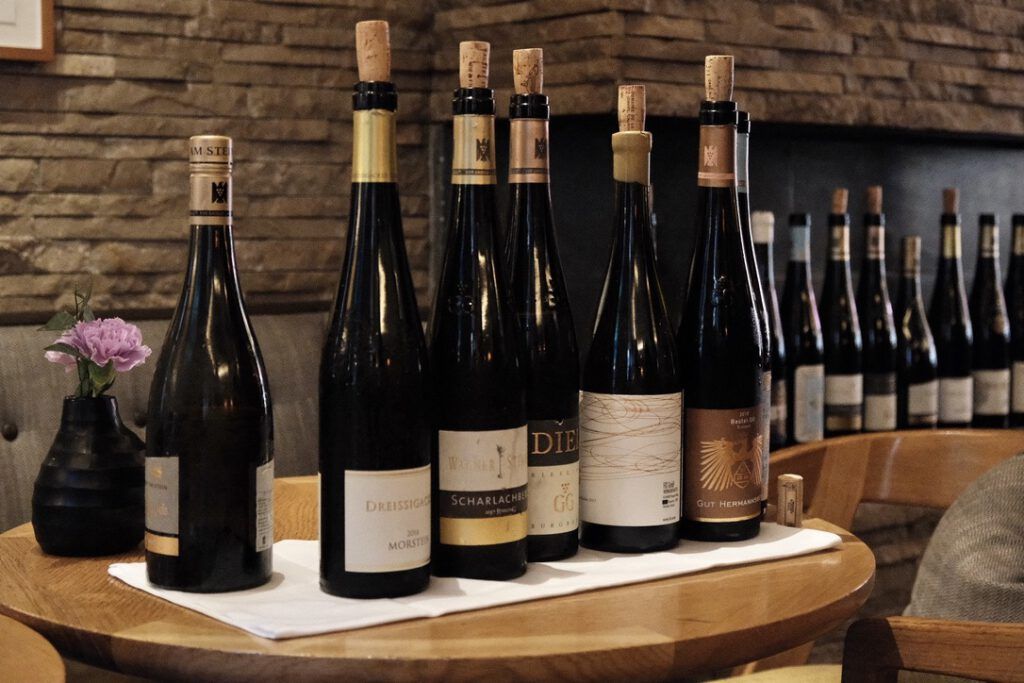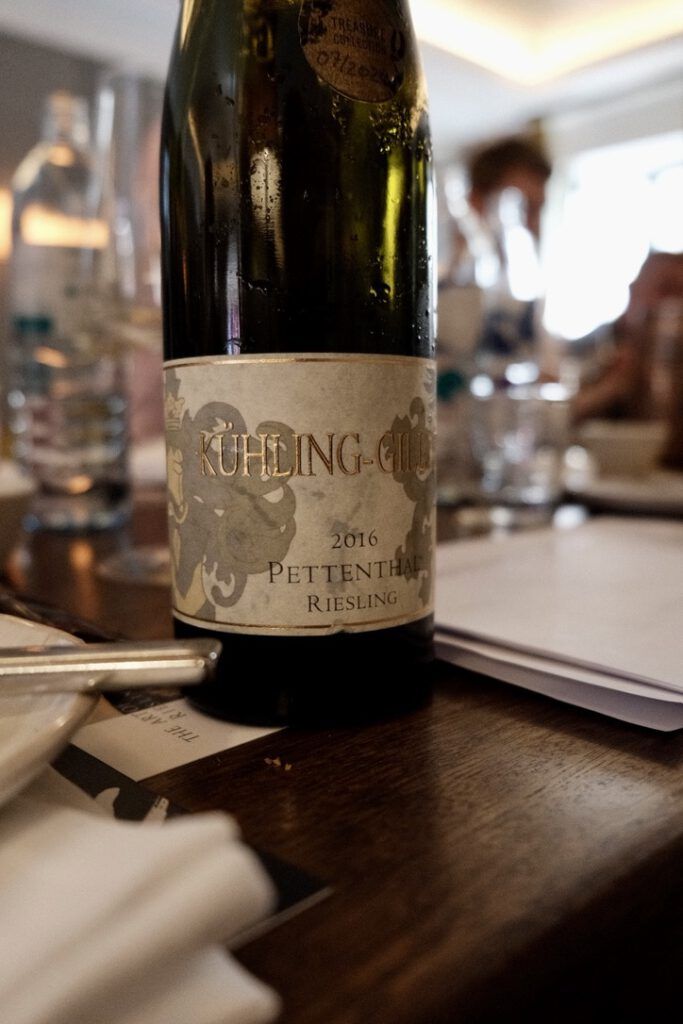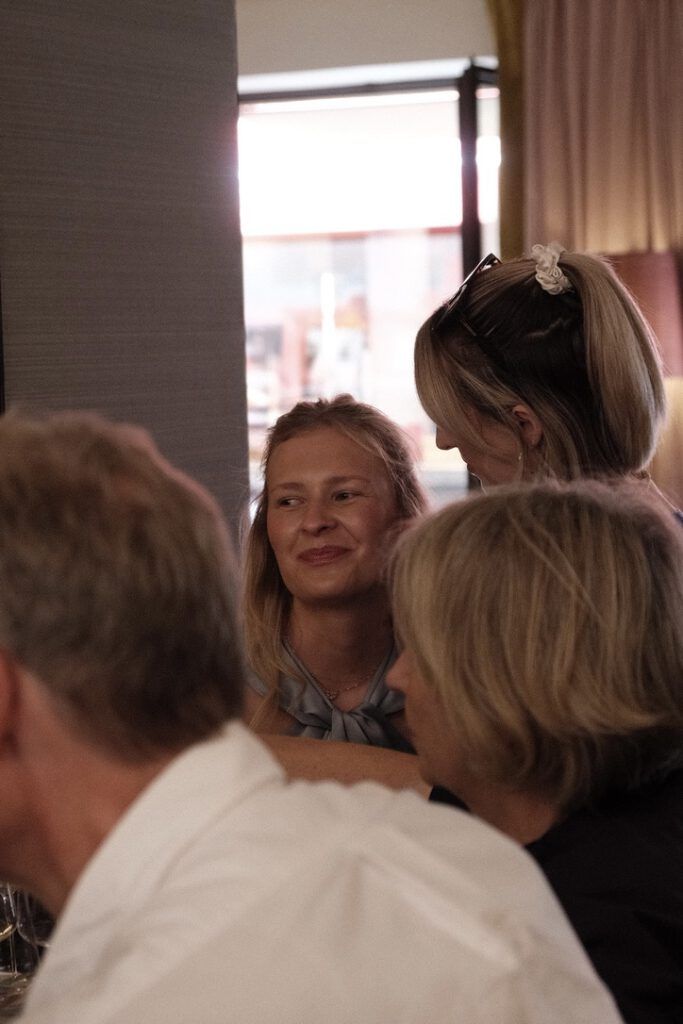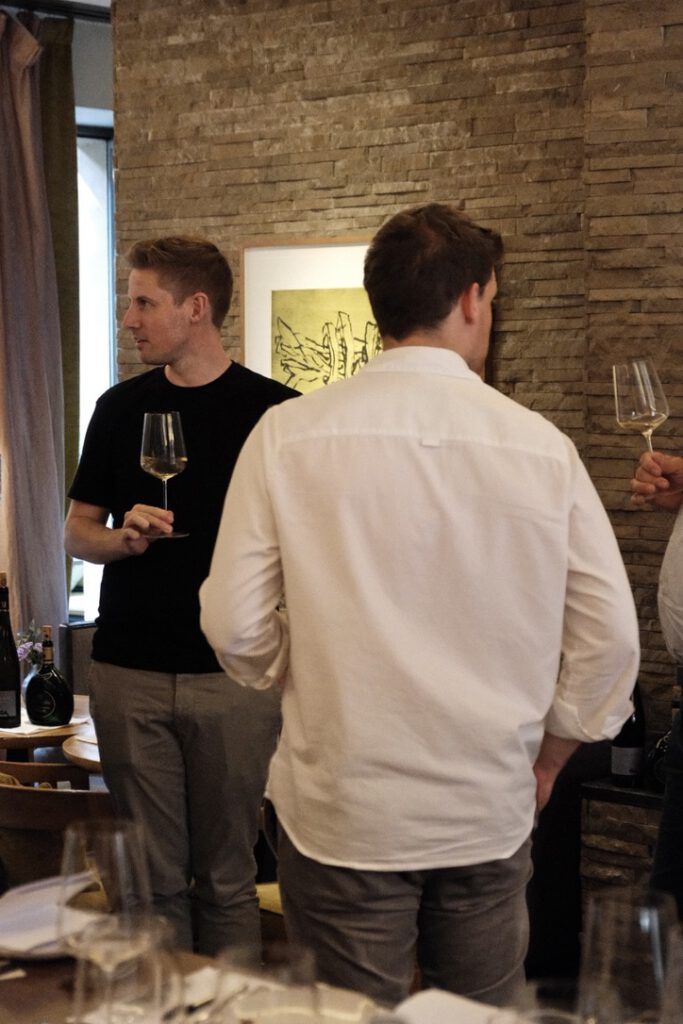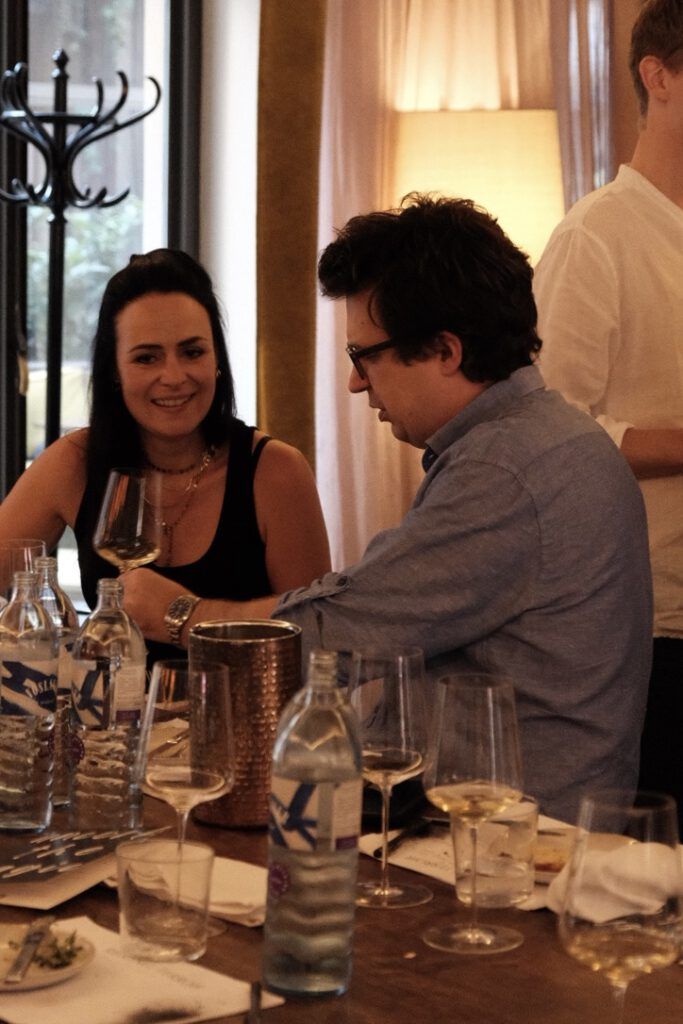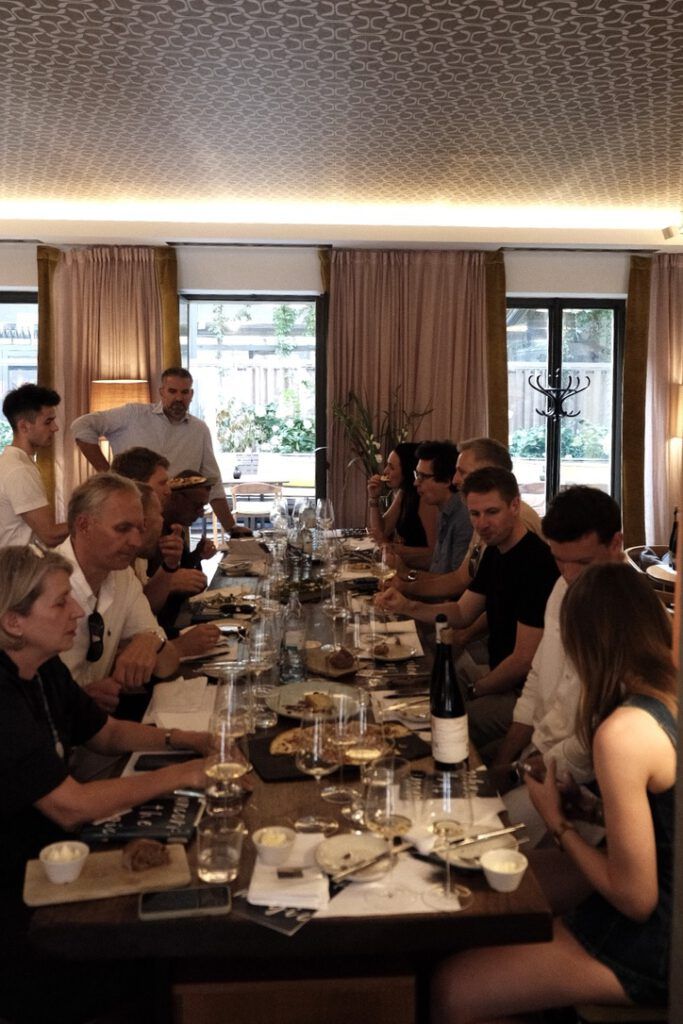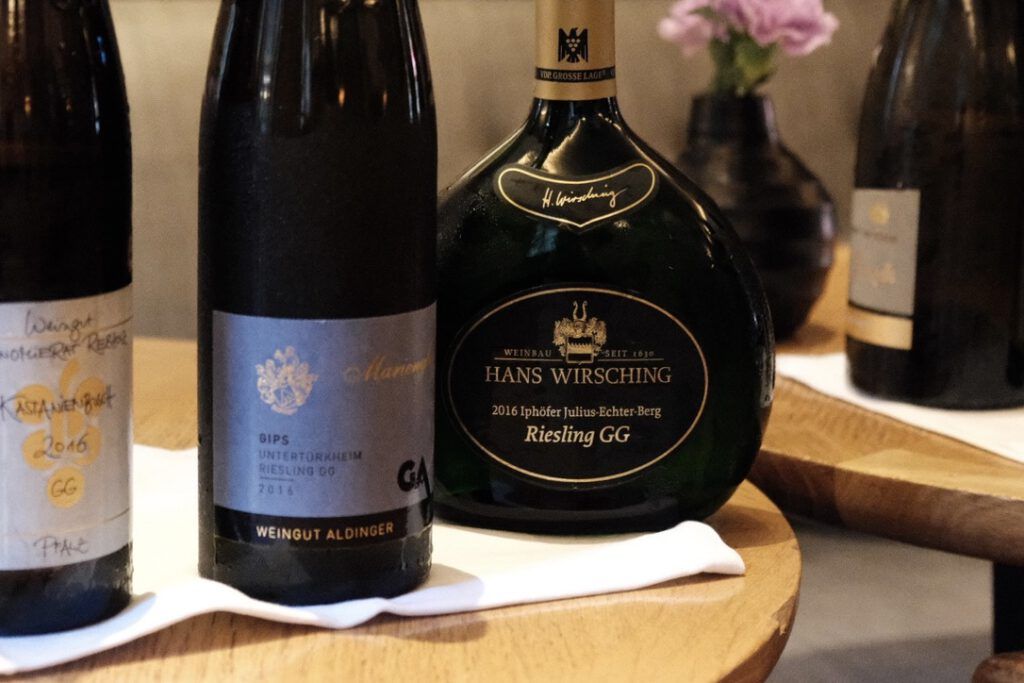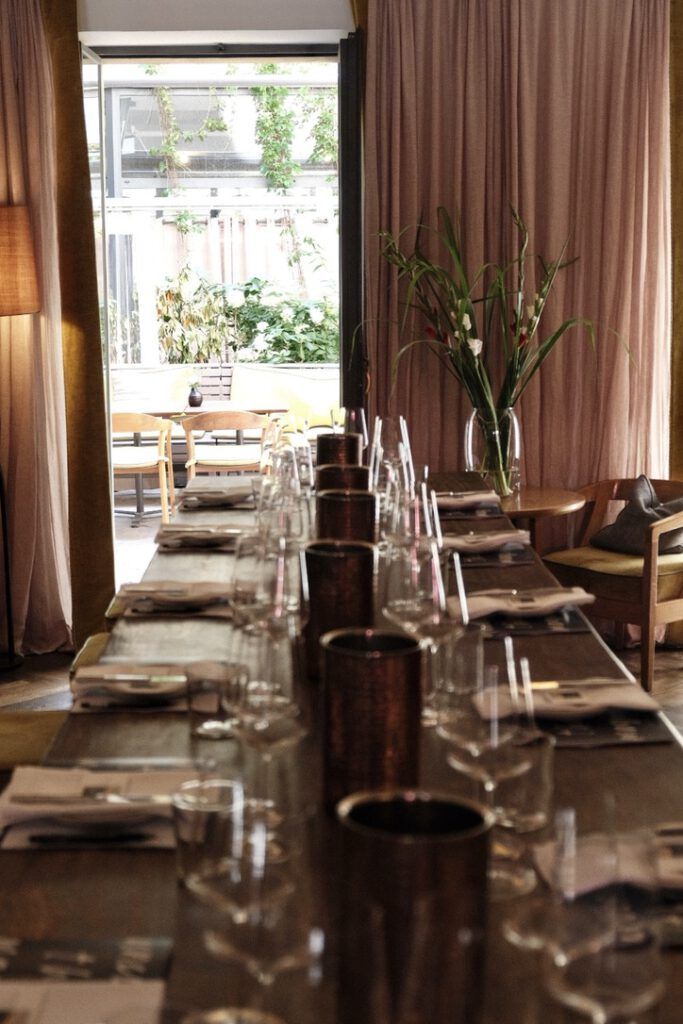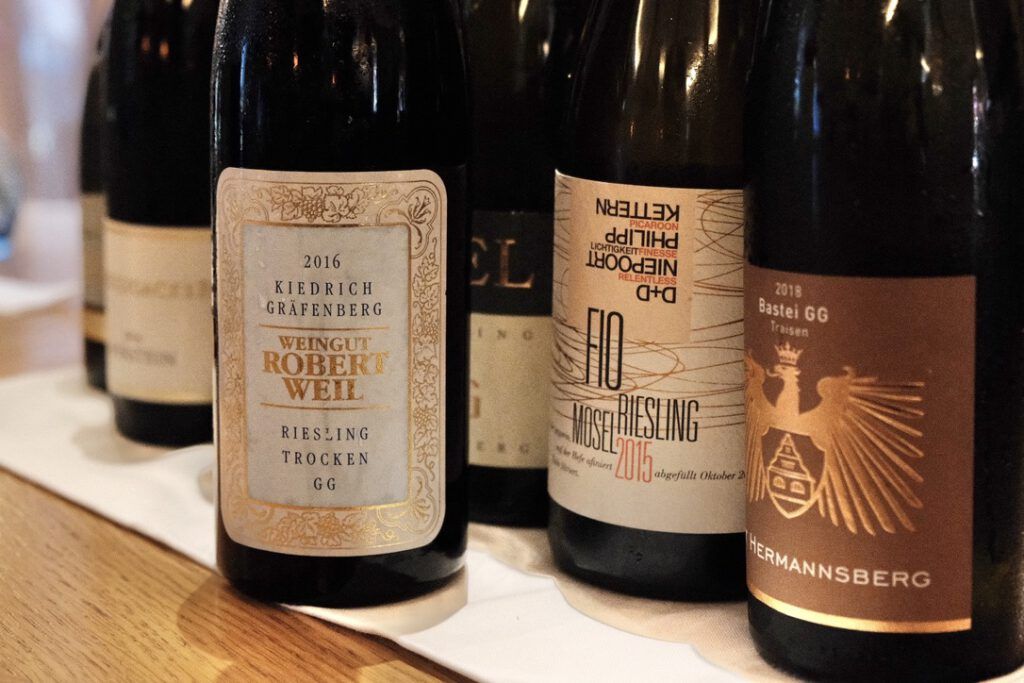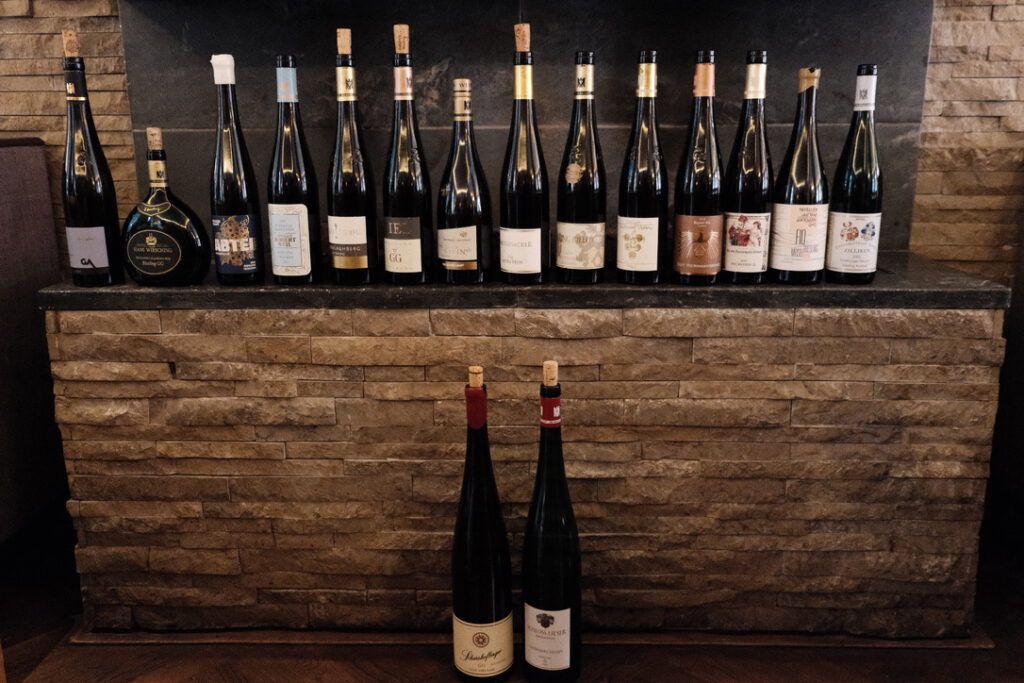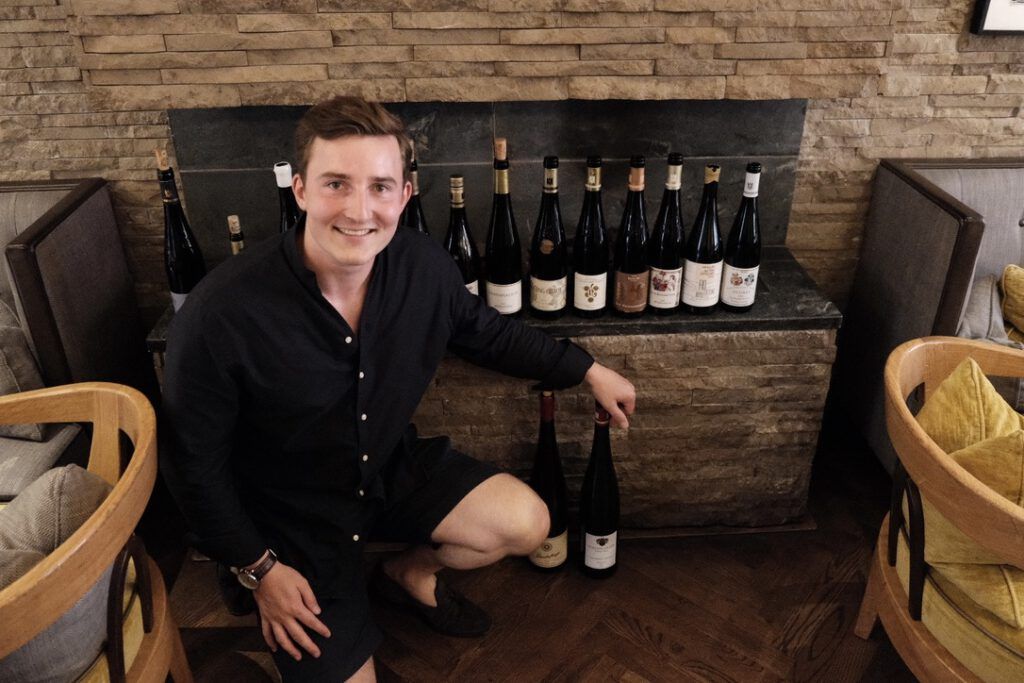The Finale: A Yeasty, Sweet Seduction
To conclude the afternoon, two exceptional Rieslings were presented: the FIO 2015 by Niepoort and Kettern, and the 2003 Rausch Riesling Auslese by Forstmeister Geltz Zilliken. For those who have been following the tasting and the accompanying text closely, you might now be wondering: What? Why on earth is this guy now throwing two such different Rieslings into the mix, ones that don’t seem to fit the theme of ‘Riesling meets Terroir’? And then in a single flight, no less? These are absolutely valid questions, to which I have a rather unfortunate yet, hopefully, understandable answer.
Initially, I had planned an additional flight focusing on Rieslings with extended lees aging and aged, off-dry Rieslings. Unfortunately, the counterparts to FIO and Rausch didn’t arrive in time. However, as I was determined to showcase both wines, I decided on the spur of the moment to pour them together at the end, alongside some flatbread, bread, and Iberico ham. To answer the obvious question: both wines paired perfectly with the food, making for a wonderful conclusion to an all-around successful tasting.
The FIO Riesling by Niepoort and Kettern was a prime example of the old Mosel school. After three years of lees aging in a 60-year-old Fuder barrel, it spends additional years maturing in the bottle before being released. Deep golden yellow, complex, and almost sherry-like in its depth and structure. The 2003 Auslese from Zilliken impressed with its exotic fruit, finesse, and dancing lightness. Despite the hot vintage, the wine remained fresh and vibrant, with dramatic acidity and hedonistic juiciness.
